

Should I Change My Oil Before Or After A Road Trip?
Keeping your car mechanically sound when you’re hitting the road, this post is part of our car care and maintenance series
When it comes to planning a road trip , there are many things to consider. One of the most important is making sure your car is ready for the journey; you might be debating whether or not to get an oil change.
You might be thinking, “My car just had an oil change a few months ago; do I really need another one?” Or, “I’m going on a long road trip. Won’t my car need an oil change after all those miles?” Well, you’ve come to the right place.
Should you always change your oil before hitting the open road? In order to answer that question, you’ll need to take into account a few factors, such as:
- How long will you be driving?
- What kind of terrain will you be traversing?
- When was the last time you changed your oil?
- And what kind of car do you have?
If you’re unsure whether or not to change your oil, it’s always best to err on the side of caution and do so before embarking on your trip. That way, you can rest assured that your car is in good condition and ready for whatever lies ahead.
Is It Better to Get an Oil Change Before a Road Trip?
There are several compelling reasons to get your oil changed before embarking on a road trip. First and foremost, it’s important to keep your car well-maintained to avoid breakdowns . And what’s worse than being stranded on the side of the highway in the middle of nowhere? Nobody wants to be that person.
Another good reason to get an oil change before a road trip is that it can actually improve your gas mileage . When your car’s engine is properly lubricated, it doesn’t have to work as hard, which means it doesn’t have to use as much gas. And who doesn’t want to save money on gas?
Finally, if you’re planning a cross-country road trip , you might be racking up a lot of miles. Most experts recommend getting your oil changed every 5,000 miles or so. So, if you’re starting with dirty oil, you could end up doing more damage to your engine than good.
So, let’s run a hypothetical situation here. Suppose it has been about 2,500 miles since your last oil change. Your upcoming road trip will be around 1,500 miles . Now, it is recommended you change your oil every 3,000 – 5,000 miles.
So, doing some quick math, you are going to be at around 4,000 miles since your last oil change by the time your road trip is over.
Now, depending on your car, you could be fine. This is where knowing your vehicle is invaluable. If I were taking my 2010 Toyota Tacoma with 98,000 miles on this hypothetical road trip, I would be changing the oil.
Some people might wonder if it’s better to get an oil change before a road trip or wait until after. In general, it’s a good idea to get an oil change before you hit the road. This will help ensure your car is running smoothly and that you don’t have any problems while you’re on your trip.
If you do wait until after your trip to get an oil change, there’s a chance that some of the problems you encountered while driving could be attributed to the oil issue. So it’s always best to take care of this kind of maintenance ahead of time.
Maybe you are all set, though. You are just a few hundred miles since your last oil change. Should you change your oil when you get back from your road trip?
Should I Do an Oil Change After a Long Drive?
If you’ve just completed a long road trip, your car may be in need of an oil change. Depending on how long you were driving and the type of terrain you were on, your car may have endured a lot of wear and tear.
If you’re not sure whether or not to get an oil change after a long drive, here are some things to consider:

How long was your trip? If it was a short trip, your car may not need an oil change yet. However, if you drove for a while on rough terrain, your car’s engine may have taken a beating. In this case, it’s best to go ahead and get an oil change.
Recently, we drove from Florida to Maine. It was a long drive for any car; the driving conditions were mostly highway miles, but there were some mountains and hills along the way.
All of that up and down puts added stress on your engine, especially when you are driving at 70-75 miles per hour.
Not to mention, our vehicle is ten years old. Show your car some love, and go ahead and get that oil change after such a drive.
In general, it’s always a good idea to get an oil change after a long road trip . This will help ensure your car is running smoothly and that any problems that occur while driving are taken care of.
Does oil last longer with highway miles?
Now, this is an interesting question. You are asking ‘If I am driving strictly on the highway, can I go longer between oil changes? Will I get more miles out of the oil in my engine now?
If we are speaking strictly of the oil in your engine, then the answer is ‘no.’
As we have established, you should get your oil changed every 3,000-5,000 miles regardless of the ‘type’ of driving.
If anything, with consistent speeds and electronically controlled engines, highway driving causes less wear and tear on your car. Regardless, the number of miles you drive will remain the same, and your oil will need to be changed. However, if you drive in stop-and-go traffic a lot, using a heavier grade of oil can help it last longer.
No matter what kind of driving you do, it’s important to keep your car well-maintained. This includes changing your oil regularly and using the right type of oil for your vehicle.
Understanding Vehicle Towing Capacity: A Comprehensive Guide
Are Scissor Jacks Safe? Here’s What We Think
Essential Mechanical Checks Before A Road Trip
Final Thoughts…
So, should you get an oil change before going on a road trip? Ultimately, that decision is up to you. If you can afford it and you’re due for an oil change anyway, then there’s no harm in getting one before hitting the open road.
However, if you’re tight on cash or your car’s engine is still relatively new, you might be better off waiting until after your road trip to get an oil change. No matter what you decide, happy travels!

© Family Road Trip
SCHEDULE SERVICE
West: 719-598-6306, east: 719-638-1800, honest guide to car maintenance before a road trip.
- May 3, 2021
- by R Stratton
Blog // Honest Guide to Car Maintenance Before a Road Trip

5 Step Car Maintenance Checklist: Preparing to Get Your Car Road Trip Ready
Scheduling car maintenance before a road trip is an essential step to get your vehicle road trip ready. Nothing can put a wrench in your travel plans like being stranded on the side of the road with car problems, such as a flat tire and no emergency kit!
This is the five-step checklist from Honest Accurate Auto Service to road trip preparation for your car. Stay ahead of the curve and keep your family safe from mechanical breakdowns by checking these 5 steps off your list before heading out on the open road.
Step One: Oil Change and Complimentary Inspection
Before heading out to explore the open road, it is important to get an oil change with a bumper-to-bumper maintenance check.
Oil is the lifeblood of your vehicle. Fresh oil helps to clean moving parts of an engine while dissipating heat to prevent a mechanical breakdown. Your vehicle depends on having the proper level and quality of oil in order to run properly.
If your vehicle is due for an oil change, or if it will be time for an oil change during your trip, it is worth the time and money to get the oil changed before you head out the driveway. All of the following steps will be checked and adjusted by your Honest Technician during your oil change service.
At Honest Accurate Auto Service, your oil change includes a comprehensive visual inspection by an ASE certified technician. Since the vehicle is going on a long trip, the car inspection includes critical components like brake pads , suspension, tires, valve stems, turn signals, master cylinders, fluid levels, and more.
Step Two: Top off Vehicle Fluids
Check the level of all the fluids in your car. According to the National Highway Traffic Safety Administration (NHTSA), the coolant, windshield washer fluid, engine oil, power steering fluid, brake fluid, transaxle, and differential oils should be inspected and topped off in order to get your vehicle road trip ready.
No matter what type of brake fluid your vehicle takes, it is a top priority to check the level and condition of the fluid. Brake fluid operates in a sealed hydraulic system to keep it free from moisture and contaminants. This impacts how each component of your brake system works, all the way from the brake pedal to the brake pads.
Another critical fluid to inspect is your vehicle’s engine coolant, which is sometimes referred to as antifreeze. Look at the coolant reservoir to ensure the fluid is filled to the car manufacturer’s recommended level. Even if the coolant level is fine, inspect the fluid to make sure nothing is floating around the reservoir indicating the coolant is very old. Lastly, check for any corrosion on the tank, as the Coolant can become acidic over time.
Windshield washer fluid, which works with the wiper blades to clean the windshield, is one of the fluids you should routinely check while stopping for gas. Periodically inspecting oil and coolant levels is also advised while traveling long distances.
At Honest Accurate Auto Service, all your vehicle’s fluids will be inspected and topped off as needed during our oil change service .
Step Three: Air Conditioner Check
Nothing will make you or your passengers more irritable than an air conditioning system quitting when temperatures (and tempers) are rising. Before leaving on a trip, check your AC unit to make sure the system is working properly.
Ask the following questions to determine if you should have an air conditioner inspection or repair:
- Is the air blowing as cold or as strong as it should be?
- Are there any refrigerant leaks coming from the hoses, compressor, or Schrader valve that could drain the refrigerant?
If the answer to these questions is yes, consider calling Honest Accurate Auto Service for air conditioning repair or service.
Advice from Accurate Andy: Another important part to check is the air filter, especially if traveling with a furry friend! Pet dander can easily block up air filters in a vehicle, so be sure to regularly check them while on the road.
Step Four: Inspect Tires
Tires are a critical asset in making it to your destination safely. A road trip-ready car should be equipped with great tires to handle the different bumps, terrains, and weather conditions out on the open road.
Remember to check your tire pressure and tire treads as part of your long trip car service! The proper inflation for tires can be found in two places: on the inside of the driver’s door jamb and in your owner’s manual.
Proper air pressure, measured in pounds per square inch (PSI), is critical for even wear patterns on tires. Overinflated or underinflated tires are a safety hazard when driving, especially on long trips in bad weather. Be sure to keep a tire pressure gauge in your vehicle so you can routinely check each tire’s PSI while fueling up.
Honest Technicians always adjust the pressure in your tires according to the manufacturer’s recommended specifications.
Even if your brakes are in good working order, your tires can be like a snow sled when they do not have adequate tread to grip the road. When the tread depth is below 2/32nd, cornering and stopping will be compromised, especially on wet roads.
If you don’t have your tires inflated or tread depth checked before a road trip, your vehicle will be more susceptible to hydroplaning .
Honest Abe Tip:
A quick way to measure the depth of your tires is by using a penny. Just follow these easy steps!
Place the penny into the trough of the tread with Lincoln’s head facing into the tire. If you can see all of Lincoln’s head, you have very little tread (less than 2/32nd) left on the tires.
When you have uneven tire wear the tires may need to be balanced or the wheels aligned. In addition, the suspension may need an inspection.
Step Five: The Road Trip Toolkit
Even small things can break, so having a few options can make your trip run smoother and keep you on the road. Be prepared and have a tool kit in your car for minor repairs.
Make sure you stock your vehicle with the following essentials:
- Jumper cables
- Wheel lock key
- Spare tire tool kit
- Cell phone and charger
- Emergency blankets
- Work gloves
When on the road, it is not important to stop and rest the vehicle unless the engine is overheating. Overheating is most likely to occur in warmer weather.
Contact Honest Accurate Auto Service to schedule Car Maintenance Before a Road Trip
Have peace of mind by being proactive before you head out on your road trip, no matter the length. Let Honest Accurate Auto Service help you cover all your bases before you hit the road. We hope you enjoyed our blog about Car Maintenance Before a Road Trip and wish you safe travels along the open road!
East Location on Tutt Boulevard in Colorado Springs
Call 719-638-1800 to call the store for a service appointment.
West Location on Nevada Mesa View in Colorado Springs
Call 719-598-6306 to schedule an appointment for service.
Share this post

Dad Car Jokes
January 8, 2024.

Fall Things To Do In Colorado Springs
September 18, 2023.

Teen Driving Tips
August 17, 2023, subscribe for tips and specials.

WEST LOCATION 426 Nevada Mesa View Colorado Springs, CO 80907 VIEW MAP
Phone: 719-598-6306 [email protected]
EAST LOCATION 3905 Tutt Boulevard Colorado Springs, CO 80922 VIEW MAP
Phone: 719-638-1800 [email protected]
©Copyright 2014-2024 Honest Accurate Auto Service | Privacy Policy | Sitemap
REQUEST APPOINTMENT
Flexy Mechanic
Is it Better to Get an Oil Change Before or After a Road Trip
Are you planning a road trip and wondering whether you should get an oil change beforehand or wait until after the trip is over?
It’s a question that many car owners face, and it’s understandable to want to make sure that your vehicle is in the best possible condition before hitting the road. But what’s the best course of action?
In this article, we’ll explore the benefits of getting an oil change before and after a road trip, as well as some factors to consider when deciding when to schedule this important maintenance task.
Whether you’re a seasoned road warrior or a first-time traveler, we hope this information will help you make an informed decision.
Benefits of getting an oil change before a road trip
There are several benefits to getting an oil change before a road trip:
- Improved engine performance and fuel efficiency : Fresh oil can help your engine run more smoothly, which can lead to better performance and fuel efficiency. This is especially important on a long road trip, where you’ll be putting a lot of miles on your vehicle.
- Increased peace of mind : Knowing that your vehicle has recently been serviced can give you peace of mind while you’re on the road. You’ll be less likely to worry about your vehicle breaking down or experiencing problems, which can help make your trip more enjoyable.
- Proactive maintenance : By getting an oil change before a road trip, you’re proactively taking care of your vehicle and helping to prevent potential issues from arising. This can help save you money in the long run by avoiding costly repairs down the road.
- Convenience : Depending on your schedule and the length of your road trip, it may be more convenient to get an oil change before you leave rather than having to stop and get one during your trip. This can help you save time and stay on track with your travel plans.
Benefits of getting an oil change after a road trip
There are also several benefits to getting an oil change after a road trip:
- Check for issues : An oil change after a road trip allows mechanics to check for any issues that may have arisen during the trip. This can help identify and fix any problems before they become more serious and costly to repair.
- Clean out dirty oil : Long road trips can put a lot of wear and tear on your vehicle, including dirtying the oil. Getting an oil change after the trip can help clean out any dirt, grime, and contaminants that may have accumulated in the oil.
- Potential cost savings : Depending on the age and condition of your vehicle, you may not need to change the oil as frequently if it has not been used as much. By waiting until after a road trip to get an oil change, you may be able to extend the time between oil changes, which can save you money in the long run.
- Improved vehicle performance : Fresh oil can help improve the performance of your vehicle, which can be especially important after a long road trip. Clean oil can help reduce friction and wear on your engine, which can lead to better fuel efficiency and overall performance.
Factors to consider when deciding when to get an oil change
There are several factors to consider when deciding when to get an oil change:
- Age, make, and model of the vehicle : Different vehicles have different requirements for oil changes. The age, make, and model of your vehicle will affect how often the oil needs to be changed. It’s important to follow the manufacturer’s recommended schedule for oil changes, as well as any additional recommendations based on the vehicle’s specific needs.
- Type of oil used : The type of oil used in your vehicle can also affect how often the oil needs to be changed. Synthetic oils, for example, can often go longer between oil changes than traditional mineral oils.
- Driving conditions : The type of driving you do can also impact the frequency of oil changes. If you mostly drive short distances or in stop-and-go traffic, your oil may need to be changed more frequently than if you primarily drive on the highway.
- Personal preference : Ultimately, the timing of your oil change will depend on your personal preference and what works best for your schedule and budget.
It’s important to consider all of the factors mentioned above, as well as any additional recommendations from a mechanic or your vehicle’s owner’s manual, to make an informed decision.
In conclusion, whether it’s better to get an oil change before or after a road trip depends on a variety of factors.
Getting an oil change before a road trip can help ensure that your vehicle is in good condition and less likely to experience problems on the road, while getting an oil change after a road trip allows mechanics to check for any issues that may have arisen during the trip.
The age, make, and model of the vehicle, as well as the type of oil used and driving conditions, can all impact the timing of an oil change. It’s important to consider these factors and follow the manufacturer’s recommended schedule for oil changes, as well as any additional recommendations from a mechanic.
Similar Posts
How to cold start a car: the definitive guide.
Are you worried about starting your car in cold weather? Here’s how to do it Prepare the car by checking the oil, battery, and fuel levels Turn the key in the ignition and allow the car to warm up Adjust the heat and defrost settings Start the engine by turning the key in the ignition…
How To Keep Windshield Washer Fluid From Freezing
As the weather turns cold, it’s important to make sure your windshield washer fluid doesn’t freeze. Not only can frozen fluid prevent you from being able to clean your windshield, but it can also cause damage to your vehicle’s washer system. In this article, we’ll provide some tips on how to keep your windshield washer…
Can A Bad Neutral Safety Switch Cause Shift Problems?
The neutral safety switch is a crucial component of your vehicle’s transmission system. Located near the shifter, this small but important part prevents your car from being put into gear unless the proper conditions are met. Without a functioning neutral safety switch, you may experience shift problems and other issues that can impact your vehicle’s…
Jump Starting Your Car: How Many Amps Do You Need?
Starting a car can be a frustrating experience when the battery is dead or weak. But with a jump starter, you can quickly and easily get your car back on the road. A jump starter is a portable device that provides a quick burst of power to start a car’s engine. It’s a handy tool…
How to Clean Wiper Blades with Vinegar: A Step-by-Step Guide
Are your wiper blades leaving streaks and smudges on your windshield? Is it hard to see clearly in the rain or during a snowstorm? If so, it’s time to give your wiper blades some much-needed TLC. And what better way to do it than with a natural and cost-effective solution like vinegar? In this article,…
My Car Smells Like Burning Plastic – Is This a Problem?
Some common causes of burning plastic smells in cars include: Electrical malfunctions Leaks in the car’s engine Burned-out clutch Faulty air conditioning system To address a burning plastic smell in a car, some steps you can take include: Checking for visible signs of damage Checking the car’s fluid levels Opening the windows and ventilating the…
Leave a Reply Cancel reply
Your email address will not be published. Required fields are marked *
Save my name, email, and website in this browser for the next time I comment.
- Schedule Appointment
- Download Mobile App
- Signup Offer!
- Get Specials
- Air Conditioner Repair
- Axles, Struts and Shocks
- Brake Pads and Rotors
- Brake Repairs
- Car Battery
- Electronic Diagnostics
- Engine Repairs
- Mufflers and Exhaust
- Oil Changes
- Preventative Maintenance
- Radiator Repairs
- Tire Service
- Transmission Repair
- Tune Up Car
- Wheel Alignment
- Why Gary's Automotive
- 24 Hour Towing
- 2 Year / 24 K Warranty
- FREE Shuttle
- Friendly Staff
- In the Press
- Car Care Blog
- Get Directions
- Career Opportunities

96% of customers would refer us to friends
4.91 76 reviews
308-381-2295
Gary's Quality Automotive
3703 W Old Potash Hwy Grand Island, NE 68803

A Few Words of Caution Before Starting Out on Your Summer Trip:
A wise driver will want to know that all the systems of their vehicle are operating at peak efficiency before they start out on their summer vacation. But it can be risky having service work performed just before a trip. For example, the drain plug may not be tightened properly. The vibration of the road will loosen it and you end up leaving a trail of oil down the road. As you make your plans, the schedule that needed an oil change or another maintenance service a good week before heading down the road.
Looking for quality oil changes? Contact our ASE Certified Technicians at Gary's Quality Automotive. Call (308) 381-2295 for more information and to find our oil change coupons . Our auto shop proudly serves vehicle owners in Grand Island, NE , Wood River, NE and Doniphan , NE .

- Why is car repair so expensive?
- What does engine rebuild consist of?
- How often should you get your car maintenance?
- How often does car air conditioning need to be serviced?
- When should you replace your brake pads?
- How Many Miles Does a Car Battery Last?
- Failing Brake Pads? Find a Brake Replacement Specialist!
- Wondering How Often Do Alternators Go Bad?
- What Causes a Broken Axle?
- Wheel Alignment: What all does it affect?
- Quote Request
- Ask A Question
- Call or Text
- Store Hours
- Text Me Address
- Open in Apple Maps
- Open in Google Maps
- Send Text Message
- Call Me Back
- Text Me Back

Should I Get an Oil Change Before a Road Trip? Find Out 5 Tips
Should I get an oil change before a road trip? This is a common question among DIYers preparing for their summer adventures. Before taking a long road trip, it is important to conduct proper vehicle maintenance tasks such as an oil change and under-the-hood inspections in order to ensure peak performance with the use of fuel additives like AMSOIL P.i.® Performance Improver.
Not only will you learn about the benefits of fresh oil for engine health and improved fuel efficiency with proper lubrication, but also how to conduct thorough under-the-hood inspections as part of your pre-trip preparations. Additionally, we’ll discuss the use of fuel additives such as AMSOIL P.i.® Performance Improver for peak performance during extended drives.
Determining when your car needs an oil change can be crucial in avoiding potential issues on the road. We will explore signs that indicate it’s time for an oil change and how recent servicing impacts the need for additional maintenance before hitting the open highway.
By following these expert tips and advice on getting an oil change before a road trip, you can confidently embark on your journey knowing that your vehicle is well-prepared to tackle any challenges along the way.
- 1 The Importance of Oil Changes Before a Road Trip
- 2 Benefits of Fresh Oil for Engine Health
- 3 Improved Fuel Efficiency with Proper Lubrication
- 4.1 Inspecting Tires for Wear and Adjusting Tire Pressure
- 4.2 Checking Valve Stem Caps for Security
- 4.3 Examining Antifreeze/Coolant Levels
- 4.4 Power Steering Fluid Checks and Replacement
- 4.5 Brake Pad/Fluid Replacement Using Quality AMSOIL DOT 3 & DOT 4 Synthetic Brake Fluid
- 5.1 How AMSOIL P.i.® Performance Improver Works
- 5.2 Advantages of Using Fuel Additives During Road Trips
- 6.1 Signs Your Car Needs an Oil Change
- 6.2 How Recent Servicing Impacts the Need for an Additional Oil Change
- 7.1 Common Issues Found During Under-The-Hood Inspections
- 7.2 DIY Tips for Inspecting Various Components
- 8 Should I Get an Oil Change Before a Road Trip?
- 9 Should You Change Your Oil Before or After a Long Road Trip?
- 10 How Often Do You Change Your Oil on a Road Trip?
- 11 What Should You Change Before a Long Road Trip?
- 12 Conclusion
The Importance of Oil Changes Before a Road Trip
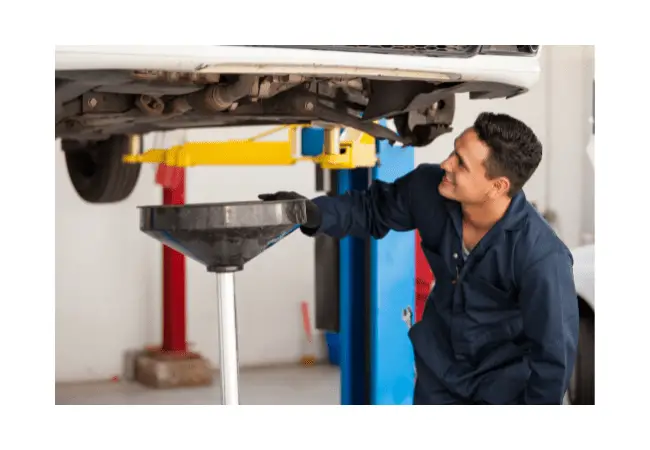
Ensuring your vehicle is in top condition before embarking on a road trip includes getting an oil change if necessary. Fresh oil keeps the engine clean and well-lubricated, promoting optimal performance and extending its life. Additionally, an efficiently running engine consumes less gas per mile, saving you money on fuel during your journey.
Benefits of Fresh Oil for Engine Health
Fresh oil is essential for reducing friction between engine parts, preventing wear and tear, transferring heat away from components, and removing dirt particles that can cause damage. It also helps to keep the engine cool by transferring heat away from critical components. Moreover, clean oil removes dirt particles that can accumulate over time and cause damage to internal parts.
Improved Fuel Efficiency with Proper Lubrication
- Better Gas Mileage: A well-lubricated engine operates more smoothly, which means it requires less energy to function properly. This results in better gas mileage during long road trips or even daily commutes.
- Emission Reduction: An efficient engine produces fewer emissions due to reduced strain on its components. By keeping up with regular oil changes before hitting the road for a summer trip or any other occasion, you’ll be doing your part to minimize air pollution while enjoying improved performance from your vehicle.
- Savings at the Pump: With improved fuel efficiency comes savings at the pump – something every driver appreciates when planning a long road trip.
If you’re unsure whether it’s time for an oil change before heading out on your next adventure, it’s always a good idea to consult your vehicle’s owner’s manual or speak with a trusted mechanic. A trusted mechanic or your vehicle’s owner manual can help you decide the best route to take based on factors like mileage and road conditions.
In addition to getting your oil changed before embarking on a road trip, there are other essential maintenance tasks that DIYers can perform themselves or have checked by professionals. These checks will ensure that your car runs smoothly throughout your journey while avoiding costly breakdowns and repairs down the line. Continue reading for more information on these crucial pre-trip preparations.
The importance of oil changes before a road trip cannot be overstated, as it is essential to the health and performance of your engine. To guarantee your car is ready for any voyage, it’s vital to do regular maintenance inspections on all its parts.
Key Takeaway:
Before going on a road trip, it’s important to ensure your vehicle is in top condition by getting an oil change if necessary. Fresh oil keeps the engine clean and well-lubricated, promoting optimal performance and extending its life while also saving you money on fuel during your journey. Additionally, there are other essential maintenance tasks that DIYers can perform themselves or have checked by professionals to avoid costly breakdowns and repairs down the line.
Essential Vehicle Maintenance Checks for DIYers
Prior to taking a lengthy journey, it is imperative that your vehicle be in its best condition. In addition to scheduling an oil change if needed, there are several other aspects of vehicle maintenance that DIYers can check themselves or have checked by professionals. By performing these essential checks, you’ll avoid costly breakdowns and repairs down the line while enjoying a smooth journey.
Inspecting Tires for Wear and Adjusting Tire Pressure
Tire inspection should be at the top of your list when preparing for a summer trip . Check all four tires for signs of wear, such as cracks or bulges in the sidewalls and uneven tread wear patterns. Additionally, ensure each tire has the correct pressure according to your owner’s manual or door placard recommendations. Properly inflated tires not only improve fuel efficiency but also provide better handling during long drives.
Checking Valve Stem Caps for Security
A loose valve stem cap can lead to air leaks and result in low tire pressure over time. Before hitting the road, make sure all valve stem caps are secure on each wheel; this simple step will help maintain optimal tire performance throughout your journey.
Examining Antifreeze/Coolant Levels
Your car’s cooling system plays a vital role in preventing engine overheating during extended trips under high temperatures. Check antifreeze/coolant levels using the markings on the reservoir tank – if they’re below recommended levels, top off with coolant mixed 50/50 with distilled water if necessary.
Power Steering Fluid Checks and Replacement
Proper power steering fluid levels ensure smooth handling during your road trip. Inspect the reservoir for adequate fluid levels, topping off if needed. If the fluid appears dark or has a burnt smell, consider having it replaced before embarking on your journey.
Brake Pad/Fluid Replacement Using Quality AMSOIL DOT 3 & DOT 4 Synthetic Brake Fluid
- Brake Pads: Visually inspect brake pads for wear – replace them if they’re worn down to less than 1/8 inch (about the thickness of two pennies).
- Brake Fluid: Check brake fluid levels in the master cylinder reservoir – top off with AMSOIL DOT 3 & DOT 4 Synthetic Brake Fluid, which offers superior performance compared to conventional fluids.
Taking these essential vehicle maintenance steps will help ensure you have a safe and enjoyable road trip experience while avoiding unexpected issues along the way.
To ensure your vehicle is in top condition before a road trip, it’s essential to complete the necessary maintenance checks. To maximize engine performance during long drives, fuel additives such as AMSOIL P.i.® Performance Improver can help improve power and efficiency while providing protection against wear and tear on vital components of your car’s engine.
Before embarking on a long road trip, it’s important to perform essential vehicle maintenance checks such as inspecting tires for wear and adjusting tire pressure, checking valve stem caps for security, examining antifreeze/coolant levels, ensuring proper power steering fluid levels and replacing brake pads/fluid using quality AMSOIL DOT 3 & DOT 4 Synthetic Brake Fluid. These steps will help ensure a safe and enjoyable journey while avoiding unexpected issues along the way.
Fuel Additives for Peak Performance During Long Drives
Using fuel additives like AMSOIL P.i.® Performance Improver helps maintain peak performance throughout long drives by cleaning injector deposits, valves, and the combustion chamber. This ensures smoother operation while reducing emissions from your vehicle during extended trips.
How AMSOIL P.i.® Performance Improver Works
The unique formula of AMSOIL P.i.® is designed to clean your engine’s entire fuel system effectively. It targets harmful deposits that can build up over time in injectors, intake valves, and combustion chambers which may cause reduced power output and poor gas mileage. Removing these deposits restores optimal engine performance and improves overall efficiency.
Advantages of Using Fuel Additives During Road Trips
- Better Fuel Efficiency: Clean engines run more efficiently than those with deposit buildup; this means you’ll get better gas mileage on your summer trip when using a high-quality additive like AMSOIL P.i., ultimately saving money at the pump.
- Smoother Engine Operation: Deposits in the fuel system can lead to rough idling or hesitation upon acceleration – both of which are not ideal for long road trips. Using a powerful cleaner such as AMSOIL P.I. will help ensure smooth operation throughout your journey.
- Emission Reduction: A clean engine emits fewer pollutants into the atmosphere due to improved combustion efficiency; thus incorporating an effective additive before embarking on a lengthy drive is not only good for your car but also beneficial for the environment.
- Extended Engine Life: Regular use of fuel additives can help prevent deposit buildup, which in turn reduces wear and tear on your engine components. This ultimately leads to a longer-lasting engine that requires less maintenance over time.
Incorporating a fuel additive like AMSOIL P.i.® Performance Improver before embarking on a long road trip is not only a good idea but also an essential step in ensuring optimal vehicle performance throughout your journey. By keeping the engine clean and running efficiently, you’ll enjoy better gas mileage, smoother operation, reduced emissions, and extended engine life – all crucial factors for successful road trips.
Using a fuel additive such as AMSOIL P.i.® Performance Improver can help ensure peak performance during long drives, making it an important consideration for any road trip. To determine when your car needs an oil change before hitting the road, we will explore signs that indicate servicing is necessary and how recent servicing impacts this need.
Using a fuel additive like AMSOIL P.i.® Performance Improver before going on a long road trip can help maintain peak performance, improve fuel efficiency, reduce emissions, and extend engine life by cleaning the entire fuel system effectively. It targets harmful deposits that may cause reduced power output and poor gas mileage while ensuring smoother operation throughout your journey.
Determining When Your Car Needs an Oil Change Before Hitting the Road
Regularly scheduled appointments are essential in maintaining your car’s health; however, it’s crucial to know when exactly you should get an oil change before a road trip based on factors such as recent servicing or high-quality engine lubricants used previously (e.g., Slick Mobile Oil). Learn how to check the oil level color yourself, and schedule an oil change if it appears low or dirty.
Signs Your Car Needs an Oil Change
- Mileage: Most vehicles require an oil change every 3,000-5,000 miles. If you’re nearing this threshold before embarking on a long road trip, consider getting your oil changed beforehand.
- Oil Color: Fresh engine oil is typically amber-colored and transparent. Over time, it becomes darker due to contaminants. Check the dipstick for dark brown or black-colored oils – these indicate that it’s time for a replacement.
- Noise & Performance Issues: A lack of proper lubrication can cause increased noise from the engine and decreased performance. If you notice any unusual sounds or sluggishness while driving, consider scheduling an appointment for service.
How Recent Servicing Impacts the Need for an Additional Oil Change
If you’ve recently had your vehicle serviced but still plan on taking a summer trip soon after, evaluate whether another visit is necessary by considering factors like mileage driven since the last service and the type of motor oils used during previous maintenance sessions (synthetic vs. conventional). Synthetic oils, for example, can last longer between changes than their conventional counterparts.
Before embarking on a long road trip, it’s always a good idea to consult your vehicle owner’s manual or speak with an automotive professional about the recommended oil change intervals and types of lubricants best suited for your specific make and model. This ensures optimal engine performance throughout your journey while avoiding potential damage caused by inadequate lubrication.
In summary, determining when to get an oil change before hitting the road involves considering factors such as mileage driven since the last service, type of motor oils used during previous maintenance sessions (e.g., synthetic vs. conventional), and visible signs indicating that it may be time for fresh engine lubricant. By keeping these considerations in mind and staying proactive about scheduling appointments if needed, you’ll help ensure smooth driving during your upcoming adventure.
Paying attention to the indications that your car might need an oil change prior to a long journey can help you avoid potentially expensive repairs later on. Now let’s take a look at some general under-the-hood inspection tips for road trip preparation.
Before embarking on a long road trip, it’s important to determine when your car needs an oil change by considering factors such as mileage, oil color, and noise/performance issues. It’s also essential to consult your vehicle owner’s manual or speak with an automotive professional about the recommended oil change intervals and types of lubricants best suited for your specific make and model.
General Under-the-Hood Inspection Tips for Road Trip Preparation
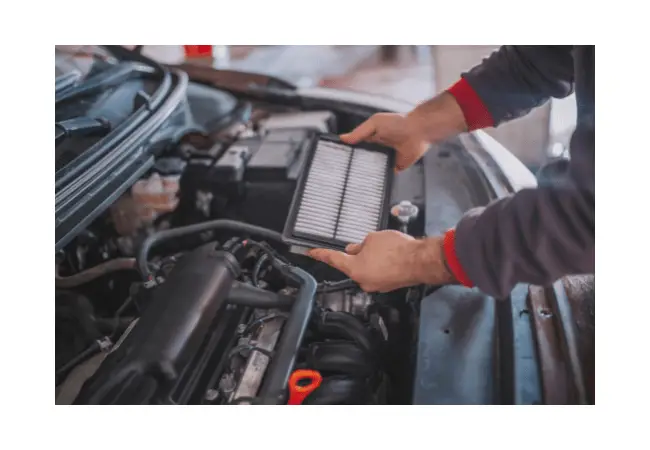
A thorough under-the-hood inspection is crucial before embarking on a road trip. This includes checking radiator hoses, clamps, belts, fuses, headlights, brake lights, turn signals, windshield washer reservoirs, and wiper blades. Making necessary repairs or replacements where needed will ensure your vehicle runs smoothly throughout your journey while avoiding costly breakdowns and repairs down the line.
Common Issues Found During Under-The-Hood Inspections
- Radiator Hoses: Look for cracks or leaks in the hoses that connect to the radiator. Replace any damaged hoses immediately to prevent overheating during your trip.
- Clamps: Ensure all hose clamps are secure and tight; loose connections can lead to coolant leaks and engine damage.
- Belts: Check serpentine belts for wear or fraying; replace them if they show signs of excessive wear as they’re essential for powering various components like alternators and water pumps.
- Fuses: Inspect fuses in the fuse box to make sure none are blown; replace any faulty ones with new ones of the same amperage rating.
- Windshield Washer Reservoirs: Top off fluid levels so you can easily clean bugs from your windshield during long drives without stopping at gas stations frequently.
- Lights: Test headlights (including high beams), brake lights, and turn signals – replacing bulbs as needed ensures maximum visibility during nighttime driving conditions.
DIY Tips for Inspecting Various Components
To perform a comprehensive under-the-hood inspection, follow these DIY tips:
- Engine Oil: Check the oil level and color yourself by pulling out the dipstick, wiping it clean with a rag or paper towel, reinserting it fully into its tube, and then removing it again to see where the oil sits on the stick. Schedule an oil change if necessary.
- Coolant Level: Ensure your engine coolant is at proper levels by checking in both the radiator cap (when cool) and overflow reservoir; top off as needed with the appropriate antifreeze mixture.
- Tire Pressure: Use a tire pressure gauge to check each tire’s inflation level; adjust according to manufacturer recommendations found in your owner’s manual or on the driver-side door jamb sticker.
- Power Steering Fluid: Locate the power steering fluid reservoir – typically near belts/pulleys – remove the cap/dipstick combo & wipe clean before reinserting/replacing the cap securely.
- Air Filter: Examine the air filter for excessive dirt buildup; replace it if dirty so that the engine can breathe efficiently during long drives.
Maintaining your vehicle’s health through regular inspections will help ensure you have an enjoyable and safe road trip experience without unexpected breakdowns or costly repairs along the way. If you’re planning a long road trip or summer trip, it’s a good idea to get an oil change before hitting the road.
Before embarking on a road trip, it’s important to perform a thorough under-the-hood inspection. This includes checking various components such as radiator hoses, clamps, belts, fuses, and lights to avoid costly breakdowns during the journey. Additionally, getting an oil change before hitting the road is recommended for maintaining your vehicle’s health.
Should I Get an Oil Change Before a Road Trip?
Yes, it is recommended to get an oil change before embarking on a road trip. Fresh oil ensures proper engine lubrication, reducing friction and heat generation while improving fuel efficiency. It also helps prevent potential breakdowns due to old or contaminated oil.
Should You Change Your Oil Before or After a Long Road Trip?
You should ideally change your oil both before and after a long road trip. Changing the oil prior to the journey ensures optimal performance during the drive, while changing it afterward addresses any contaminants that may have accumulated over time.
How Often Do You Change Your Oil on a Road Trip?
The frequency of changing your car’s engine oils depends on factors such as driving conditions and vehicle type. Generally, most vehicles require an oil change every 5,000-7,500 miles . For extended trips exceeding this mileage range, plan for at least one mid-trip maintenance stop.
What Should You Change Before a Long Road Trip?
Prioritize these key components when preparing for a lengthy drive:
- Tires: Inspect wear patterns and adjust pressure accordingly
- Coolant levels: Check antifreeze/coolant levels in the radiator reservoir
- Brake pads/fluid: Replace worn brake pads and top off fluid using quality synthetic brake fluid like AMSOIL DOT 3 & DOT 4 Synthetic Brake Fluid
- Fuel additives: Consider adding AMSOIL P.i.® Performance Improver for enhanced engine performance
- General under-the-hood inspection: Check power steering fluid, belts, hoses, and other components for signs of wear or damage
In conclusion, getting an oil change before a road trip is essential for engine health and improved fuel efficiency. DIYers should also perform essential vehicle maintenance checks such as inspecting tires, checking antifreeze/coolant levels, examining power steering fluid, and replacing brake pads/fluid with quality AMSOIL DOT 3 & DOT 4 Synthetic Brake Fluid .
Additionally, using fuel additives like AMSOIL P.i.® Performance Improver can further enhance peak performance during long drives. It’s important to determine when your car needs an oil change based on signs of wear and recent servicing history. Finally, conducting general under-the-hood inspections can help identify common issues before hitting the road.
If you’re planning a road trip soon or need assistance with vehicle maintenance, visit Vehicle Maintenance Pros for expert advice and high-quality products that will keep your car running smoothly throughout your journey.
Preparing for the Weather
8 Helpful Apps for a Road Trip
Common Mistakes to Avoid
Taking a Road Trip With Kids
Planning a Solo Road Trip
How to Plan a Camping Road Trip
Planning a Stargazing Road Trip
10 Helpful Budget Tips
Calculating the Cost of Gas
Budget for a 3-Day Road Trip
Best Road Trip Route By Interest
Mississippi River Road Trip
Atlantic Coast Road Trip
Southern US Road Trip
Northern US Road Trip
Pacific Coast Road Trip
US Route 12
Northeastern US Routes
Rocky Mountain Destinations
Warm-Weather Road Trip
The Longest Highway in the US
Car Rental Companies
Best Audio Books
Must-Have Emergency Supplies
Family Road Trip Toys and Games
Car Bike Racks
Getting Your Car Ready
8 Things You Need to Do to Get Your Car Road-Trip Ready
:max_bytes(150000):strip_icc():format(webp)/IMG_2615-6f9df6cb7d33463a88744d33bc1f8af7.jpg)
Time off work? Check. Accommodations booked? Check. Itinerary planned? Check. Bags packed? Check. Auto maintenance complete? Uh oh.
If you can’t remember the last time your vehicle had a date with a mechanic, then you aren’t quite ready to embark on that epic road trip you’ve been dreaming about.
"Long road trips can test your vehicle's strength and not every part in a vehicle gives you fair warning," says Lauren Fix, an ASE-certified technician, race car driver, and award-winning author of three automotive books. "When going on a road trip, it's important to have your vehicle's brakes, tires, and fluids checked, along with any moving or rubber parts that can fail and leave you stranded on the side of the road."
The following items should be checked at least every six months (or sooner, depending on the manufacturer’s recommended maintenance schedule)—spring and fall, before the weather changes—and also before heading out of town:
No, it's not just a ploy to get you into a repair shop—oil is the lifeblood of your vehicle. "If your vehicle is due for an oil change or close, have that service completed before you hit the road, especially if your vehicle is not normally driven at highway speeds," says Kevin Fawthorp, a master certified technician with Community Tire Pros and Auto Repair in Arizona and part of the Network of Neighborhood Auto Repair Professionals (NARPRO). "Today's engines and oils are better than ever; however, timely oil changes are very important."
Once inside your vehicle, tires often become an “out-of-sight, out-of-mind” automobile component. But their condition is essential to your vehicle’s safety, fuel efficiency, performance, and traction. Fix says to check the pressure of all tires, including your spare once a month—either by using a digital tire pressure gauge and comparing the results to the information on the decal inside your driver’s side door or by popping into a shop that will take care of this service free of charge. Next, take a look at the tread depth to see if your tires are damaged or worn unevenly. “When tires are worn unevenly or damaged, don’t wait to replace them,” says Fix. Finally, make sure you’re having your tires rotated per the owner’s manual recommendations, which often takes place during an oil change.
Often, brakes will give the driver some warning signs of upcoming issues. “Most disc brake pads have a squeal sensor mounted on the pad and when you are nearing the end of useful pad life will start to squeal to let the driver know before other parts—such as rotors or calipers—become damaged, causing a relatively inexpensive repair to become quite expensive,” says Fawthorp. “You cannot mistake this squeal.” Also, pay attention to other warnings, such as a sudden “spongy” pedal, pulling one direction or the other when brakes are applied, or a brake pedal that either shakes or moves up and down slightly while you are braking.
Windshield Washer Fluid and Wiper Blades
This one’s usually easy enough to do yourself: Refill the fluid in the windshield washer reservoir and replace wiper blades that are torn, cracked, or don’t properly clean your windshield. “Eighty percent of driving decisions are based on vision, so clear, unobstructed sight is critical,” says Fix, who suggests replacing your traditional blades with “beam” blades, which are curved to hug the windshield better.
Battery life spans differ depending on your climate and driving habits—for instance, the average lasts from three to five years. Still, Fawthorp says a battery in the Arizona heat has an average life span of only 30 months. When starting your car, he suggests listening for sounds indicating the battery may be losing some of its power, takes longer to start, or has a slight hesitancy on the first start of the day. Most service shops have equipment that can test your battery for condition, which should prevent you from experiencing a battery failure on the road.
Interior and Exterior Light Bulbs
With the help of a family member or neighbor, complete an exterior lighting check. “Don’t chance getting a warning or repair order from the police, or having someone rear-end you because your brake lights or turn signals weren’t working,” says Fawthorp. Some bulbs are easy to replace yourself, while others may require the assistance of a pro. Also, take a moment to double-check all interior lights to ensure you’ll have lighting inside your vehicle when you need it.
Cabin Air Filter
This little filter is responsible for trapping contaminants from the outside air and ensuring your air conditioner airflow will not be challenged on the road—but not if it’s old and dirty. Signs include a musty smell when turning on your air conditioning, poor airflow, and air not blowing as cold as usual. Ask about the condition of your cabin air filter during your next oil change.
Inspect for Leaks, Smells and Noises
“If you see a leak under your car, this is the sign of a problem,” says Fix. “Take a picture of the leak to show the repair shop, as it will help them diagnose the issue. Use your senses. What does it smell like? What does it look like? Do you hear any unusual sounds? This information will help, as well.”
Fawthrop recommends bringing your vehicle in two weeks before your trip—if extensive repairs are necessary, this will not only ensure there’s plenty of time to complete them, but it will also allow you a few extra days afterward to drive around your neighborhood just to make sure everything is working well.
“Your automobile is a very complex piece of machinery, with a lot of things that must work together to get you where you want to go on time and safely,” says Fawthrop. “Have a professional put his or her eyes on the vehicle before you jump on the highway and find yourself stranded in unfamiliar territory while trying to find help and a quality repair professional.”
Planning a Road Trip: The Complete Guide
The 9 Best Car Phone Mounts of 2024, Tested and Reviewed
Emergency Supplies for Road Trips
The 14 Best Backpack Brands of 2024
10 Travel Tips for Your Winter Road Trip
The 7 Best Ice Augers of 2023
The 8 Best Car Sunshades of 2024
9 Tips for Maximizing RV Gas Mileage
The 14 Best Survival Kits of 2024
The 10 Best Delsey Luggage Items of 2024
The 8 Best Air Mattresses for Camping of 2024, Tested and Reviewed
The 9 Best Beach Cruiser Bikes of 2024
10 Cool Ways to Upgrade Your RV
The 10 Best Places to Buy Bikes
How to Plan for the Weather During Your Road Trip
Driving in Paris, France
- Knowledge Base
3 Reasons Why You Should Change Oil Before a Road Trip
By John Anderson - Last Updated: August 7, 2023
Ah, the open road beckons! The wind in your hair, the adventure awaiting, and the promise of new horizons. Yet, before you set forth on that thrilling road trip, have you pondered giving your trusty four-wheeled friend a little tender loving care? Yes, we’re talking about oil change. Now, you might be thinking, “Is that really necessary?” Well, fellow road explorers, let’s delve into the world of engine TLC and unveil why an oil change before your journey is as crucial as picking the perfect playlist. Get ready to rev up your knowledge!
Ensuring Optimal Engine Performance
Picture this: you’re cruising down Route 66, the sun shining, tunes blasting, and suddenly, your engine starts making noises that rival a rock concert. Not the kind of music you were hoping for, right? Well, that’s where clean, fresh oil comes to the rescue. Engine oil isn’t just a slick substance that keeps things running smoothly; it’s the unsung hero that prevents your engine from turning into a meltdown party.
Lubrication and Heat Dispersion
Imagine your engine as a bustling metropolis, with countless parts moving at lightning speed. Now, throw in some friction, and you’ve got a recipe for disaster. That’s where oil steps in, acting as the ultimate peacemaker between these engine components. It reduces friction, allowing them to coexist harmoniously, like a perfectly choreographed dance routine. No dance-offs between engine parts here!
Engine Efficiency and Friction Reduction
Let’s talk efficiency. A well-lubricated engine is like a well-oiled machine—pun totally intended. Fresh oil reduces friction, which translates to less energy wasted in overcoming resistance. Your engine can now channel its inner Usain Bolt, sprinting with less effort and sipping fuel like a seasoned tea connoisseur. Who knew oil could turn your engine into an energy-saving superstar?
Potential Pitfalls of Neglecting Oil Change
Now, here’s the reality check. Old or degraded oil on a road trip is like showing up at a karaoke contest with a sore throat—things aren’t going to end well. Heat buildup, excessive friction, and decreased fuel efficiency are just a few of the roadblocks you might encounter. Imagine stopping every few miles to cool off your engine—talk about putting the “stop” in road trip. Nobody wants their journey to resemble a never-ending pit stop marathon.
Preventing Breakdowns and Costly Repairs
Alright, let’s talk turkey—err, engines. Regular oil changes are like a shield that defends your engine from the nefarious forces of wear and tear. Just think of it as a superhero cape, ready to swoop in and save the day when you least expect it.
Oil Changes: The Ultimate Breakdown Buster
Imagine this: You’re gliding down the road, the sun bidding adieu in a spectacular burst of orange hues, when out of nowhere, your engine decides it’s time for a spontaneous vacation. But hold on a minute! This entire scenario could have been averted with a humble oil change. Clean oil, my friend, is the unsung hero that wards off sludge buildup, ensuring your engine’s vital parts remain cheerful, hearty, and oh-so-functional. It’s like treating your engine to a luxurious spa day, complete with the fanciest cucumber slices for the crankshaft. Who would have thought that oil could be such a lavish indulgence? Vroom vroom, the pampered way!
Dirty Oil, Grumpy Engine
Now, let’s get serious for a moment. Dirty or insufficient oil is like serving a gourmet meal on a dirty plate—it’s just not going to taste the same. Old oil can become contaminated with debris, turning it into a gritty potion that spells disaster for your engine’s longevity. It’s like making your car run a marathon through a desert of dust and gravel. Not the kind of race your car signed up for.
Tales of Breakdown Woe: Learning from Mistakes
Let’s talk horror stories. Picture this: you’re in the middle of nowhere, surrounded by tumbleweeds and the haunting echoes of your engine’s dying breaths. All because you skipped that oil change. We’ve all heard tales of travelers stranded on the side of the road, wishing they’d heeded the warning signs. Don’t become the star of the next “Roadside Misadventures” documentary. Your car deserves better than a starring role in that show.
Maximizing Fuel Efficiency
Now, let’s dive into your wallet. Who doesn’t relish the idea of pocketing some extra cash at the gas pump? After all, those dollars could be put to much more exciting use, like exploring quirky roadside wonders or indulging in delectable artisanal snacks. Let’s talk dollars and sense, shall we? Time to fuel your adventure, and your savings!
Clean Oil, Happy Wallet
You might not think of engine oil and fuel economy as buddies, but trust us, they’re besties. Clean oil allows your engine to operate like a well-regulated orchestra, with every instrument playing its part to perfection. This means your engine doesn’t have to work as hard to get you from A to B, and that, my friend, translates to fewer pit stops at the gas station. Your wallet will thank you for that extra scoop of artisanal ice cream.
Oil Quality and Fuel Efficiency Dance
Did you know that the quality of your engine oil directly affects how efficiently your engine burns fuel? It’s like choosing between a gourmet burger made from prime beef and a fast-food mystery patty. High-quality oil ensures that every drop goes a long way, while subpar oil can lead to inefficient combustion and wasted fuel. Your car deserves the gourmet treatment, even when it comes to oil.
Saving on Fuel Costs: A Road Trip Souvenir
Let’s do some quick math. Better fuel efficiency equals fewer trips to the pump, which equals more money in your pocket. You can spend those savings on cheesy souvenirs, quirky roadside attractions, or even a spa day for your car (you know, a luxurious car wash). It’s like turning your road trip into a money-saving adventure. Who says road trips have to break the bank?
Tips for Timing Your Oil Change
Before you rush to the nearest mechanic with an oil can in hand, let’s talk strategy. When should you change your oil before hitting the road? Fear not, intrepid traveler, we’ve got you covered.
The Recommended Oil Change Intervals
Different cars, different strokes. The recommended oil change intervals vary depending on your vehicle’s make and model. Check your owner’s manual to find the golden number for your trusty steed. Think of it as a secret code to unlocking engine nirvana.
The Road Trip Factor: Mileage and Timing
Planning a road trip? Think of your car as an athlete gearing up for a marathon. If your car’s due for an oil change around the time of your trip, why not tackle both tasks in one go? It’s like hitting two birds with one stone—minus the feathered casualties.
Debunking Oil Change Myths: Separating Fact from Fiction
Time for some myth-busting. You might have heard that changing your oil right before a road trip is unnecessary. Well, it’s time to put that myth to rest. Fresh oil ensures your engine is in top shape for the journey ahead. It’s like giving your car a pep talk before a big game.
From preventing breakdowns to maximizing fuel efficiency, fresh oil is the secret sauce that keeps your engine purring like a contented kitten. So, next time you’re gearing up for that epic road trip, remember: a little oil change today can save you from a whole lot of engine woes tomorrow. And who knows, maybe your car will reward you with a little extra vroom-vroom for your efforts! Happy road tripping, and may your engine be forever oily and trouble-free!

Table of Contents
Editor's recommended.
By - Updated August 22, 2023
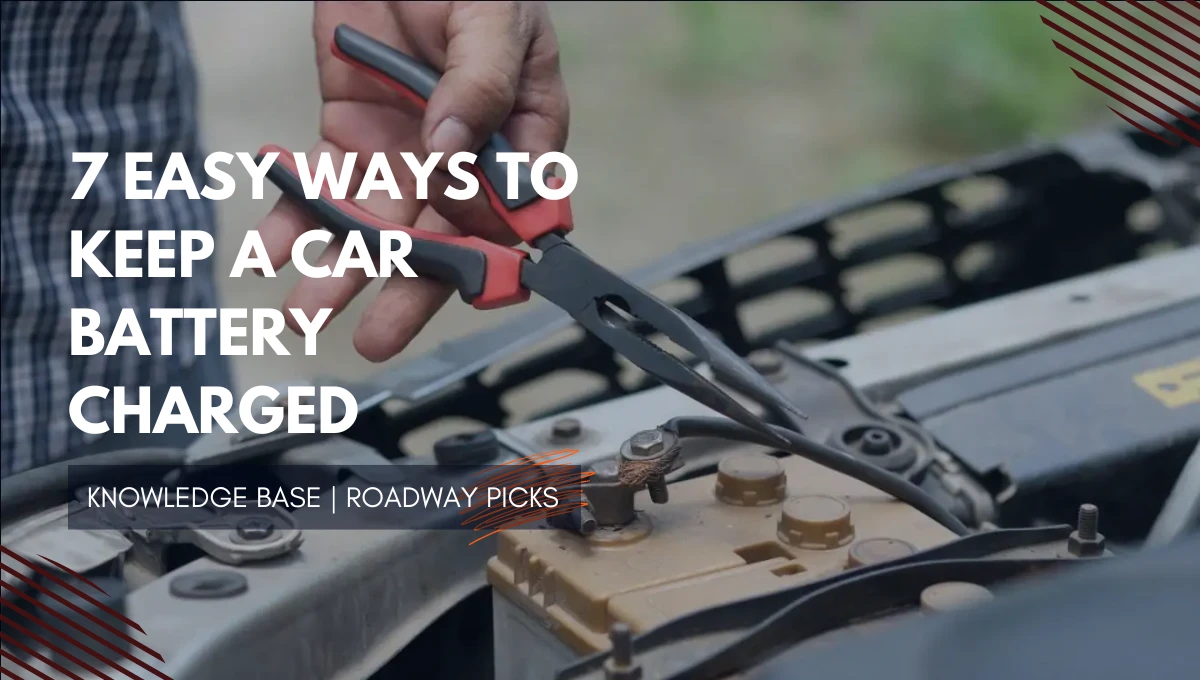
By John Anderson - Updated July 16, 2023

By John Anderson - Updated August 26, 2023

SCROLL TO SITE
SCROLL TO CURRENT LIST
How To Prepare Your Vehicle For An Epic Road Trip
/https://www.forbes.com/wheels/wp-content/uploads/2020/09/Family-vaca.png)
Planning a road trip should be an enjoyable process, however, choosing destinations, booking hotels, planning activities can easily overwhelm even the most organized traveler. But with a little forethought, the results can be epic. That’s especially true during a global pandemic when America’s roadways are the most popular means of travel.
According to a survey conducted by Chevrolet and research firm Harris Poll, 80% of those polled said that going on a road trip has been one of their happiest moments since March. Forty-one percent said they road-tripped to a place they’ve never been before, which underlines an important element that often is left out of the planning process: preparing the family vehicle.
Even the most detailed travel itinerary won’t save a vehicle from a lack of routine maintenance, so it’s crucial to ensure that routine and other preparatory maintenance procedures are performed before setting out for an adventure.
Ideally, vehicle maintenance is a 24/7 proposition, but it is particularly important before a long road trip, especially in the heat of summer and to unfamiliar destinations off the beaten path. Though visiting family and friends has been the number one destination for coronavirus-motivated road trips, as reported by Harris Poll, beach, hiking fishing and national Park exploration rounded out the top five.
No matter the destination, take care in readying the vehicle that will get you there—and back. Here are some of the best ways to prepare a vehicle for a summer road trip.
/https://www.forbes.com/wheels/wp-content/uploads/2020/09/proper-tire-maintenence.png)
Maintain Tires
Tires are the only part of a vehicle that are in direct contact with the road, so extra care is needed to ensure they are correctly inflated, display even treadwear, are free from any obvious defects and are of the size and type specified by the manufacturer.
Key considerations for tire maintenance include:
- Air pressure : The specific air pressure required by a vehicle’s tires is found on a small label attached to the inside of the driver’s door jamb. The temperatures listed are usually stated as being “cold temperatures,” which means that tire pressure should be checked before the vehicle has been driven for any length of time. Tire pressures should be checked at least every 1000 miles. If the vehicle is heavily loaded, towing a trailer, or kept on the road for extended periods of travel, the tires should, at a minimum, be checked visually at every stop. It’s a good idea to keep an air pressure gauge in the glove box of your vehicle.
- Rotation : Vehicles come in a variety of drive-wheel configurations, including front-wheel drive, rear-wheel drive, all-wheel drive and four-wheel drive. The wheels that receive power wear tires more quickly than non-drive-wheel tires. This is especially true for performance vehicles, where wheel spin and hard cornering are part of the norm. Additionally, worn or loose steering components can promote the uneven wear of the front tires. Rotating tires moves them front-to-back or side-to-side, promoting even wear. (The proper rotation pattern for your car is located in the owners manual.) This service should be performed every 5,000 to 8,000 miles or sooner if uneven wear is observed. Many shops include tire rotation in the price of their oil change specials.
- Condition : Bulges, gouges, and other visually observable damage should be inspected by a professional to ensure that the tire’s structural integrity isn’t compromised. Even a minor impact from a pothole or curb can damage a tire. Visual cues, such as uneven tread wear and odd wear patterns on other parts of the tire are an indication that a checkup is overdue.
/https://www.forbes.com/wheels/wp-content/uploads/2020/09/check-your-oil.png)
Check Fluids
Maintaining a vehicle’s fluids is an essential step toward ensuring that a summer road trip goes off without a hitch. While motor oil is sometimes referred to as the lifeblood of an engine, modern vehicles use a variety of specialized fluids vital to your vehicle’s operation and longevity.
- Transmission fluid : Many new vehicles come with sealed transmissions that don’t allow for easy checking or topping off of the fluid, but it’s still important to understand the role transmission fluid, or oil, plays in its operation. Depending on the vehicle, the transmission may have a service interval of up to 100,000 miles and require special equipment to replace it. A good rule of thumb for vehicles equipped with a traditional dipstick should be to check the fluid regularly and replace it according to the specifications outlined in your owners manual. Old fluid can accumulate dirt and debris and dramatically reduce your transmission’s performance and lifespan and burnt fluid can indicate severe wear of the internal components. Automatic transmissions can be finicky, so if you have any doubts, see your dealer or a qualified independent mechanic.
- Power steering fluid : While electric and electrically-assisted power steering systems become more common every day, plenty of vehicles still utilize hydraulic power steering systems. These power steering systems use a fluid that can become contaminated over time, hampering performance and possibly causing leaks or damage to the system components. The fluid reservoir is generally located in an easily accessible location under the hood, making it easy to check each time vehicle’s engine oil is changed.
- Brake fluid : Braking systems use fluid to build hydraulic pressure to force the calipers to clamp the brake pads down onto the rotors. If the brake pedal starts to feel spongy or soft, air may have accumulated in the brake lines, which can require a service to bleed the lines. Brake fluid also gets contaminated and can absorb moisture, both of which can reduce performance. Service should be performed according to the service intervals outlined in your owner’s manual or approximately every 24,000 miles in everyday use. Your dealer or local shop can advise you on the best plan of action if you notice reduced braking performance.
/https://www.forbes.com/wheels/wp-content/uploads/2020/09/Oil-Change.png)
- Engine oil : Checking a vehicle’s engine oil is one of the most critical and easy to check maintenance items for an owner to perform. Some new vehicles come with a factory oil-change interval of up to 10,000 miles, but the oil should still be checked at least every 1,000 to 3,000 miles. Modern engine oil contains a number of additives that enhance lubrication properties and help to keep the oiling system clean, and over time they can become depleted. An unprecedented loss or consumption of oil could indicate more significant problems. The owner’s manual will define the type of oil to be used and how often it should be changed. And if you’re doing it yourself, don’t forget to pick up a new filter too.
- Coolant : Often referred to as anti-freeze, engine coolant is nearly as vital as motor oil. Coolant not only keeps engine temps down in the summer but helps the engine maintain the optimum operating temperature in cold climates as well as providing heat for the passengers. Low coolant can cause overheating, especially in hot weather with a fully-loaded vehicle. Like motor oil, coolant is fortified with additives that enhance performance and inhibit corrosion. Most vehicles have a transparent “overflow” tank under the hood that allows for visual inspection of the coolant level. CAUTION: Never attempt to check engine coolant on a hot or warm vehicle. If you suspect the coolant is low or compromised, see a qualified service professional.
- Windshield wiper fluid : Summer road trips offer several opportunities for bugs to smash into the windshield, and while it isn’t perfect, the vehicle’s windshield washer provides the only way to clean them off without making a time-consuming pit stop. Most vehicles have a warning light that indicates the windshield washer fluid level is low, but the fluid reservoir should be located in an easily visible place under the hood to allow for easy checks.
/https://www.forbes.com/wheels/wp-content/uploads/2020/09/Windshield-washer-resevoir.png)
Keep Up With Routine Maintenance
Fluids are essential, but they are far from the only vehicle maintenance consideration. The following should be performed regularly, but are especially important before a long road trip:
- Air filters : Most vehicles have two types of air filters. The engine air filter provides debris-free air to the engine, and the cabin air filter filters the incoming air to the passenger compartment. For the vehicle to perform as intended and for the people inside it to breathe freely, the vehicle’s air filters need to be replaced regularly. The engine air filter and cabin filters should be replaced according to the manufacturer’s specifications. Barring that, every 10,000 to 15,000 miles is a good rule of thumb.
- Belts and Hoses : Gone are the days when an average vehicle relied on three, four, or more individual belts to power all the accessories. Although there are exceptions, manufacturers now employ a single ribbed serpentine belt to drive the alternator, air conditioning compressor, water pump and other accessories whenever possible. Still, the belts wear and a quick visual inspection will reveal any cracks or fraying. While you’re at it, give the hoses a quick view noting any cracking sings of leakage at junction points.
- Lighting : A vehicle’s headlights are an obvious source of light, but there are multiple bulbs inside the cabin that may occasionally need checking and replacement. There is nothing more irritating than trying to use an interior light after dark, only to find out that it has burned out. These are generally easy to replace, and most auto parts stores carry a wide variety of replacements saving you trip to the dealer.
/https://www.forbes.com/wheels/wp-content/uploads/2020/09/Clean-Your-Car.png)
Clean the Vehicle
Driving a clean vehicle doesn’t just make for a more pleasant experience behind the wheel; it can add up to a fuel economy penalty if there is enough added weight. In addition to a full vacuum and exterior wash, make sure to remove all the excess baggage—athletic equipment, laundry and the rest of the daily detritus—to remove any extra weight. As a side bonus, it will clear room for luggage and other items required for the road trip. Plus, the psychological benefits of hitting the road in a clean, well-organized machine will make the trip even better.
You May Also Like
Less pain at the pump: the 7 best fuel-efficient sedans, family-friendly sedans: here are 7 cars that make kid-hauling possible, the 6 best suvs that come with roof rails for all your adventuring needs, planning one last summer hurrah these 7 suvs and 1 truck are skilled road trip companions, car subscription services: a complete guide to lease and rental alternatives, california governor gavin newsom signs executive order phasing out gasoline vehicles by 2035.
For partnership inquiries please reach out to us at [email protected]
- What's My Car Worth?
- Buyer's Guide
Our car experts choose every product we feature. We may earn money from the links on this page.
When Should You Change Your Oil?
Follow this simple guide to keep your engine humming a happy tune.
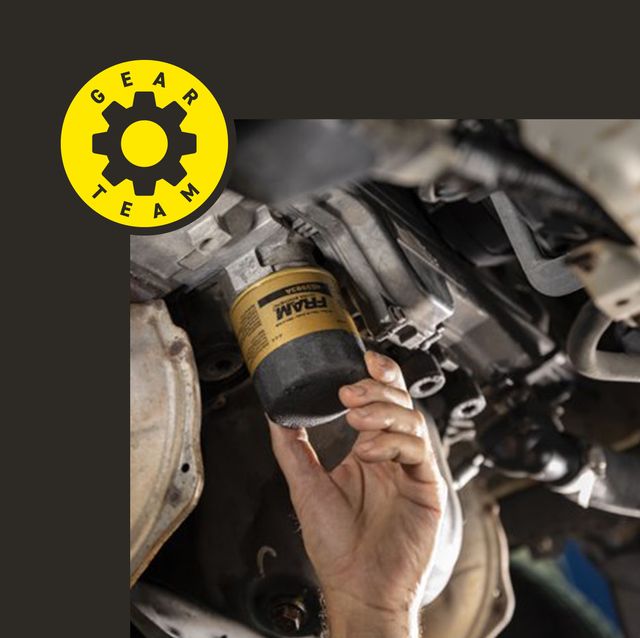
You know you need to change your car's oil at some point, but how often? The answer can be confusing, because it varies based on driving conditions and your driving habits. Let us simplify it for you.
Conservative estimates for oil-change intervals used to be as low as 3000 miles, before significant improvements in fuel-delivery systems, engine materials, manufacturing methods, and oil chemistry. Today, modern engines driven normally stretch intervals to 7500 or even more than 10,000 miles. So what's the right answer?
When Your Vehicle Is in Warranty
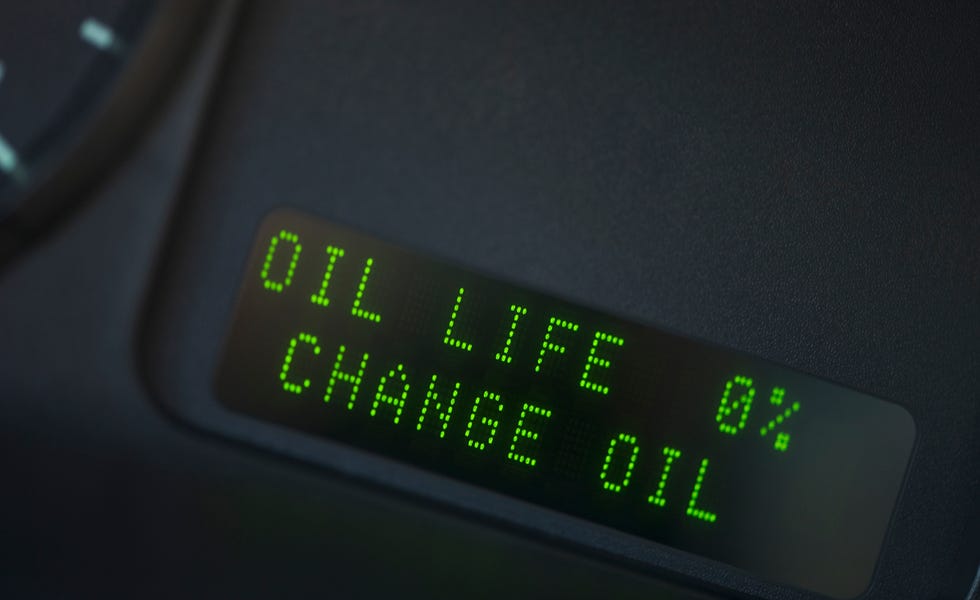
Some newer vehicles have a built-in oil-life monitor. This gadget uses an algorithm, sensors, and software that keep track of drive temperatures, cold starts , driving hours, idling hours, and engine revs. It uses that data to calculate the oil's condition and warranty-preserving change intervals. Keep in mind that the oil monitor is calibrated for the oil type recommended in the owner's manual. Service alerts are displayed in the instrument cluster. In some systems, one of the instrument-cluster information screens will read out remaining oil life as a percentage. This is much different from the red oil-pressure warning light that glows when you start the engine. If that's on while you're driving or idling, it means you're out of oil or have a very serious engine issue. Time to park and key off.
When Your Vehicle Is Out of Warranty
Once you're outside the maker's warranty, determining change intervals requires some common sense and an educated guess—unless your vehicle has an aforementioned oil-life monitor. There are often different recommendations for normal and severe driving. Intervals vary widely depending on whom you ask, whether you tow (and how often), the time of year, and even where you drive.
Severe conditions include:
- If you make many short trips of five miles or less (in normal temperatures)
- If you make many short trips of 10 miles or less (in freezing temperatures)
- Extreme hot-weather stop-and-go driving
- Driving at low speeds for long distances
- Lots of miles on dusty, muddy, salty, sandy, or gravel roads
- Long-distance trailer towing
- Track driving
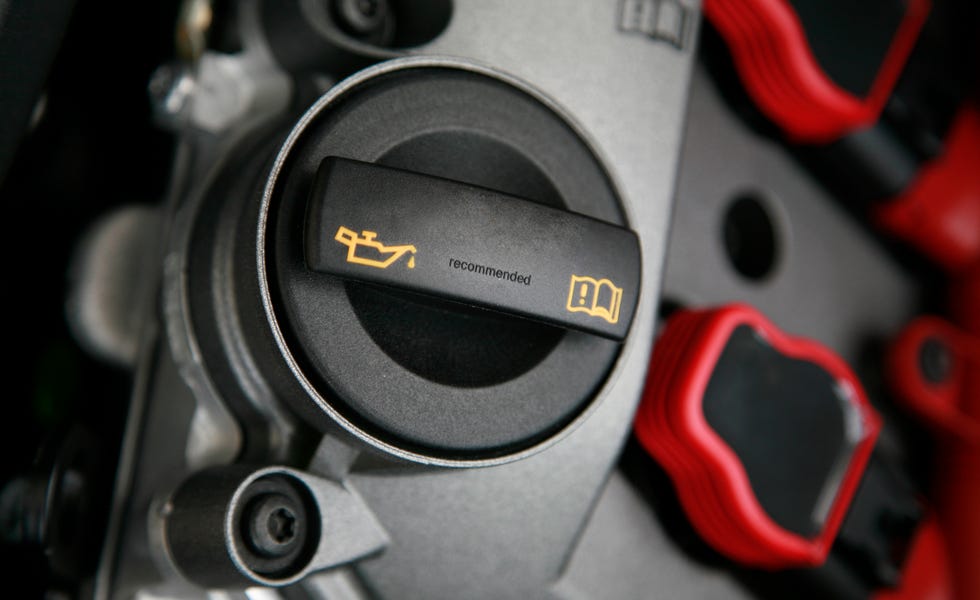
Are Frequent Oil Changes Better?
Not surprisingly, service providers (oil-change shops and dealerships) tend to recommend shorter change intervals (3000 to 5000 miles). That can never hurt your engine, but it also means they'll see you and your credit card more often. When your car's on the lift for an oil change, other wear items such as brake pads, coolant, tires, and shocks can also be assessed and possibly replaced. So it's also obviously good for their business. (With older vehicles, which may burn oil, you'll want to check the oil level using the dipstick at least once a month.) But if you're not driving your car in severe conditions—and few of us are—you can stick to the manufacturer's recommended oil-change intervals (which often include an oil-filter change at the same time). And, of course, if your car has an oil-life monitor, heed that.
Longer-Life Oils
What about using premium extended-life and pricey synthetic oils for projected 10,000- and even 12,000-mile changes? About synthetics: Almost all newer vehicles use synthetic oil, so if the manufacturer specifies that, you must use it. Many older vehicles weren't filled with synthetics when new and still use conventional petroleum-based oil. In that case, you have a choice.
Some oil refiners produce sophisticated carmaker-approved extended-life oils that do help stretch the time between changes. These oils have special chemistry or additives that support their ability to go longer distances. They resist high-temperature breakdown better and keep dirt and particulates in suspension longer so that the oil filter can catch them. They also cost more than standard oils; you'll need to do the math to see if it's worth the extra cost.
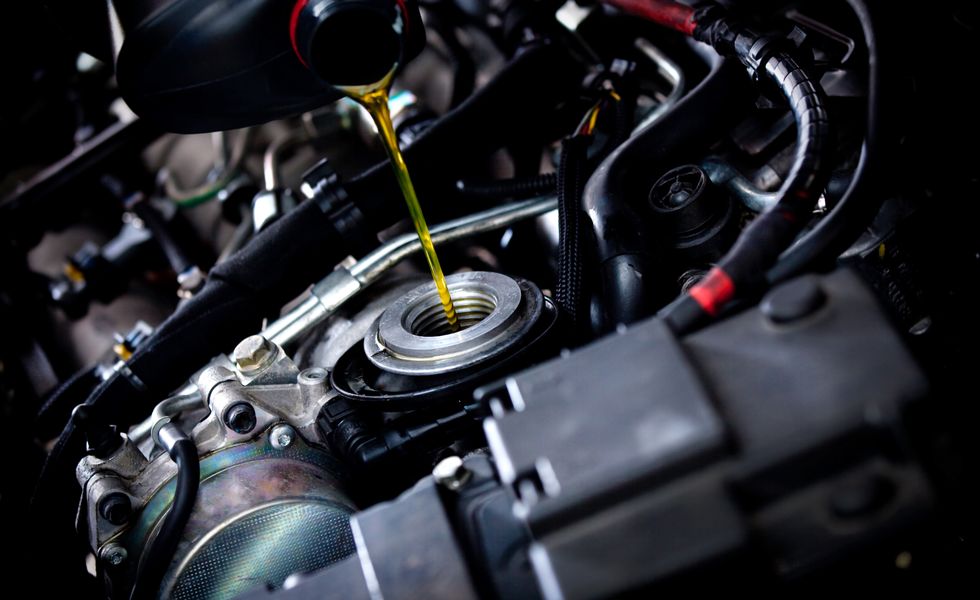
A Few Words of Caution
If you operate on dirt roads or in dusty or road-salted environments and do lots of cold starts and short runs, the factory oil filter has only so much scrubbing capacity. (That's why most makers recommend replacing the filter at each oil change.) Further, the longer-range oils can become contaminated by the sheer volume of combustion gases that blow past the worn piston rings of older cars. At some point, the oil is no longer protecting the sliding surfaces within the engine as well as it should. Engine wear accelerates after the oil breaks down or is highly contaminated. And finally, almost no automaker recommends that oil should be left in the crankcase for more than one year—no matter the mileage.
Recycling Oil
If you're changing your own oil, be sure to recycle properly. Most auto-parts stores (check before you buy) and oil-change businesses will take back used oil at no charge. Whether you do it yourself or have it done for you, changing your oil at the proper intervals will make your engine last longer and run better.
How often should you change your oil in months?
It depends on the manufacturer. The old-school way was every three months, but with improvements to oil quality and engine materials, that interval can be pushed to anywhere between six and 12 months. Your owner's manual will detail the interval.
What happens if you go too long without an oil change?
As your oil quality wears down, so do the components it's supposed to protect. If you go excessively long between oil changes, you'll reach the point of no return, and your vehicle's engine will become a massive repair bill, or even total failure.
Can I change oil every two years?
No. Almost no automaker recommends that oil should be left in the crankcase for more than one year—no matter the mileage.
How do I know when my oil needs changing?
Typically, follow the mileage and time intervals listed by your vehicle's manufacturer. But this can vary, depending on the severity of your driving. As detailed above, shorter trips, track time, and dusty roads can cause your oil to break down faster and need to be changed earlier.
Some vehicles have instrument-cluster information screens that will read out remaining oil life as a percentage. If you don't have this feature, follow along with the sticker from the oil-change place or keep track of mileage on your own. Don't forget to check your oil via the dipstick at least once a month.
Gear Up for an Oil Change with These Products
Pennzoil full synthetic 5w-30 motor oil.

Mobil 1 Full Synthetic Motor Oil 0W-40

Fram Spin-On Oil Filter

Mobil 1 Extended Performance Oil Filter

CRC Brakleen

FloTool Funnel set

Lumax 15-Quart Drain Pan and Waste Oil Storage

Pig Heavyweight Absorbent Mat

.css-1updq97:before{background-color:#000000;color:#fff;left:0;width:50%;border:0 solid transparent;bottom:48%;height:0.125rem;content:'';position:absolute;z-index:-2000000;} Auto Maintenance .css-1e2ieb7:after{background-color:#000000;color:#fff;right:0;width:50%;border:0 solid transparent;bottom:48%;height:0.125rem;content:'';position:absolute;z-index:-2000000;}
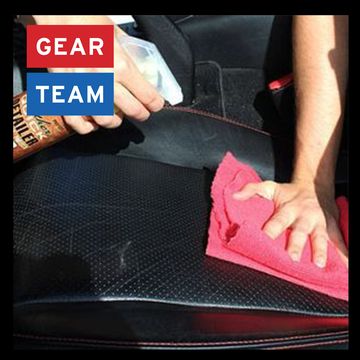
How to Make Your Car Taillights Look New
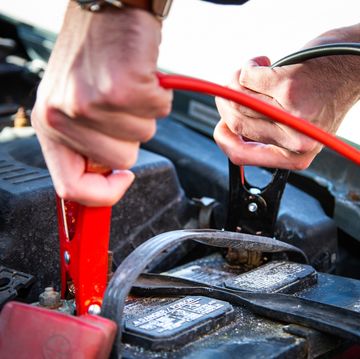
How to Jump-Start Your Car
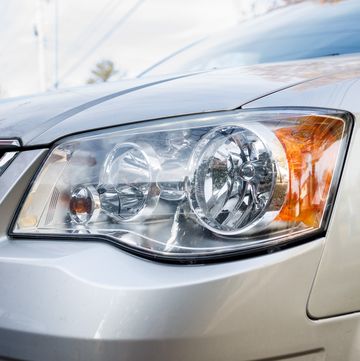
How to Replace a Broken Headlight
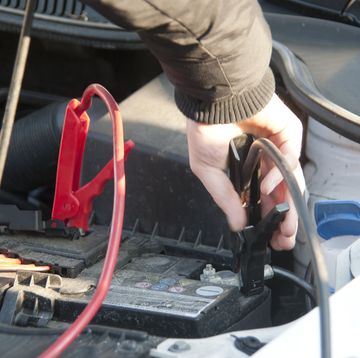
How to Charge a Car Battery

How to Choose the Best Car Battery

The Best Car Wax for Your Ride
Best Waterless Car Wash Sprays, Tested

Reset a Check Engine Light at Your Own Risk
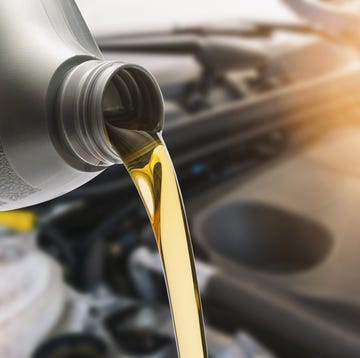
No Snake Oil Here: Top Synthetic Oils
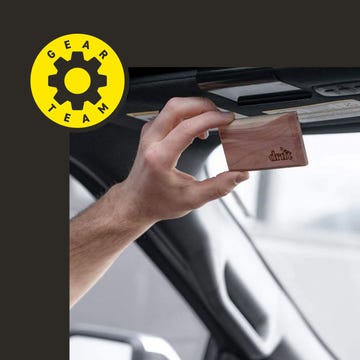
Ahhh: Air Fresheners for Your Car

6 Simple Tips to Keep Your Car Humming
Cars for sale
Sell my car, car research, sign in, the ultimate guide to road trip vehicle maintenance, preparing your vehicle for a road trip is just one of the many steps you need to take before hitting the road..

Article QuickTakes:
- Essential fluids
- Check your tires
- Brake system check
- Battery health
- Check all lights
- Emergency kit
No matter the destination, there is a lot of planning for yourself, your family, and your vehicle when taking a road trip. Those who frequently participate in carpooling should also consider preparing themselves and their vehicle before longer trips.
To get ready for a road trip, you can:
- Double-check your finances
- Research the most optimal route to the destination
- Check the weather in advance
- Create a backup plan
Next is vehicle maintenance and preparation. Preparing your car for the road has many benefits, including ensuring a safe trip. You’re more likely to avoid car problems throughout your voyage if you inspect your car beforehand.
Those who’ve recently purchased or plan to purchase a used vehicle will want to be especially mindful of any signs maintenance is needed. You may even consider setting additional funding aside dedicated to vehicle maintenance, for this can be a hidden purchasing cost not discussed during the initial negotiations.
Let’s take a closer look at essential maintenance steps to get your car ready for the road.
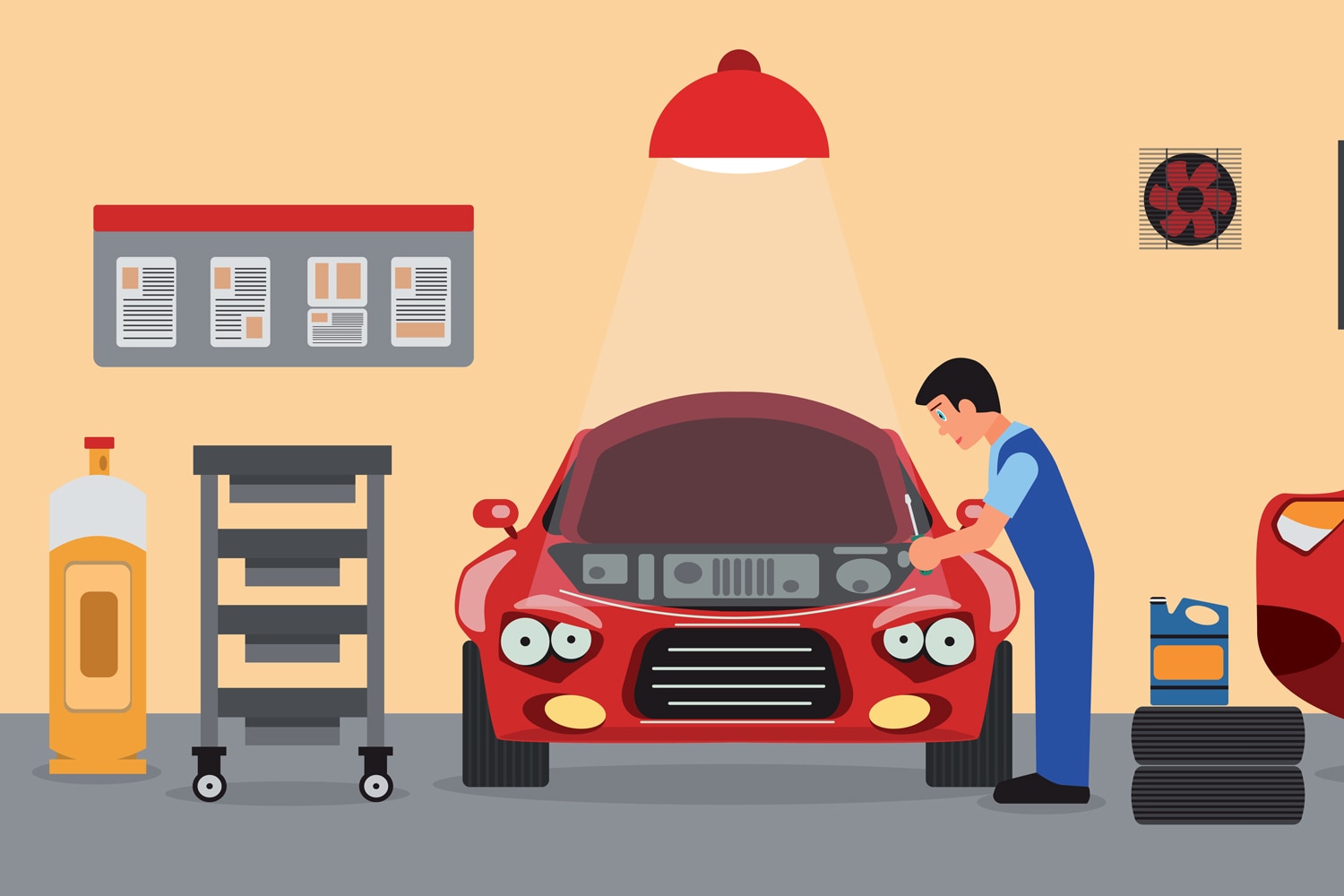
Check the Fluid Levels
There are six essential fluids you should check before every long-distance trip (unless you are driving an electric vehicle, which has fewer fluids to maintain ):
Brake Fluid
Brake fluid is necessary to apply force to brake pads, which clamp onto the rotors that slow and stop the wheels. You may need to check your brake fluid if you feel a delay in your brakes or any other abnormal feeling. To check the brake fluid, locate the brake fluid reservoir in your engine bay.
Electric vehicles will come with a handbook that provides step-by-step instructions on checking the brake fluid. If the fluid level is below the minimum, then it needs to be filled.
Coolant or antifreeze helps keep the engine cool by absorbing heat and releasing it through the radiator. If you run your engine without coolant it would overheat and possibly crack, and/or blow a gasket. It’s important to note that you must wait until the engine is completely cooled down before checking coolant levels. Checking too early could release steaming, pressurized fluid and cause burns.
How to check coolant levels varies by vehicle make and model. Look at your vehicle's manual or conduct online research to learn how to check coolant levels in your vehicle. Electric vehicles also require coolant maintenance specific to each EV type and maintenance schedule.
Engine oil is one of the most important fluids for your vehicle, and luckily, it’s easy to check on most vehicles. After turning off your car, wait at least 10 minutes before checking the oil level to allow it to cool and settle. This will give you a more accurate gauge of how much you’ll need. From there, you will locate and remove the dipstick. Next, wipe the dipstick clean with a rag or napkin and reinsert it back into the oil well. When you remove it again, pay close attention to the end of the dipstick. Ideal oil levels should be between the minimum and maximum markers on the dipstick.
Anything less than the minimum means you need more oil. Clean oil is a yellowish color and has a smooth texture. If the oil on the dipstick is dark in color and has a coarse texture, then an oil change is needed. If you notice any corrosion or build-up or if the oil is black, then it may be a sign to get an oil change. Besides, getting an oil change before a road trip is beneficial in general even if it’s not quite time.
Note that electric vehicles do not need oil changes. If you don’t drive an EV, double-check the oil type and ensure it’s the right one before putting it in your vehicle. This information can be found on the oil cap, in the car’s manual, and online.
Power Steering Fluid
Power steering fluid helps the driver turn the steering wheel with ease. If you notice the wheel becoming more difficult to turn, it could be a sign your power steering fluid levels are low. Similar to your engine oil, there’s a dipstick you can use to check power steering levels. Note that most electric vehicles do not require power steering fluid.
Transmission Fluid
Transmission fluid cools and lubricates the inner workings of the vehicle's transmission. Signs you may need more transmission fluid include rattling and other strange noises coming from the transmission, or difficulty shifting gears. Some vehicles have their own dipstick to check transmission fluid levels. Others require a mechanic’s inspection.
Since they operate with an electric motor, most electric vehicles do not have transmissions in the traditional sense, so you likely won’t need to replace or fill up the transmission fluid. However, it’s important to always follow maintenance instructions specific to your vehicle.
Windshield Washer Fluid
While it’s not needed for the car’s performance, this simple, effective fluid can make it easier to see while driving when the window gets dirty. Windshield washer fluid gets rid of debris, dirt, and bugs on the windshield. You can open the cap of the reservoir and look directly in to determine whether you need more. Fill it to the top when necessary with fluid matched to the conditions you expect.
You can check all of these fluids yourself or take your vehicle to the mechanic for professional guidance.

Check the Tires
A thorough check of your tires is a must before any road trip, regardless of whether you drive a conventional, hybrid, or electric vehicle. When traveling long distances, your tires must be able to safely withstand the elements of the road for many miles.
Ensure the current state of your tires is right for the anticipated weather conditions throughout your journey. If you’re traveling during the winter , you may consider winterizing your vehicle with snow tires or chains/cables for winter driving conditions.
Here are a few additional things to look for when checking your tires before a trip:
- Tire pressure (check your manual or inside your car door for information on ideal tire pressure)
- Enough tread and traction
- No exposed wires
Tire maintenance can be expensive, but it’s necessary. Failure to check them could result in poor gas mileage, unsafe driving conditions, or a blown tire. You may consider investing in a tire repair kit to store in your vehicle in case of a flat tire along the way.

Check the Brakes
Aside from checking the brake fluid, you’ll want to make sure your brakes in general are working properly. If you notice any delay when braking or hear a weird sound when slowing down, then take your car to the mechanic as soon as you’re able.
From here, the mechanic will be able to get a closer look at the cause of the problem. If there are any problems, then it’s a good idea to have them repaired before the trip.
Check the Battery
Checking the battery is another easy, yet crucial step of road trip preparation. To check your battery:
- Start the engine and ensure it doesn’t start slowly (failure to start at all is a telltale sign the battery may be dead)
- Verify the battery cables attached to the terminals (both positive and negative) are clean and corrosion-free
Flashing dash lights could be another indicator that the battery may need to be replaced. Luckily, not every dead battery needs to be replaced; some just need to be charged. Routinely taking care of the battery is necessary to maintain a charge.
To maintain a vehicle battery:
- Check it often to ensure it is clean and secure. Signs of leaking or corrosion could indicate the battery isn’t running efficiently
- Always turn off your vehicle when it’s not in use
- Remove corrosion using water and baking soda
- Test the battery often to ensure it’s holding a charge
Those with electric vehicles must remember that the battery is the primary source of power for their vehicle. Consider downloading an EV travel app—like PlugShare , ChargePoint , or ChargeHub —to find vehicle charging stations along your route. EV owners should also have a plan for what to do if they run out of charge .
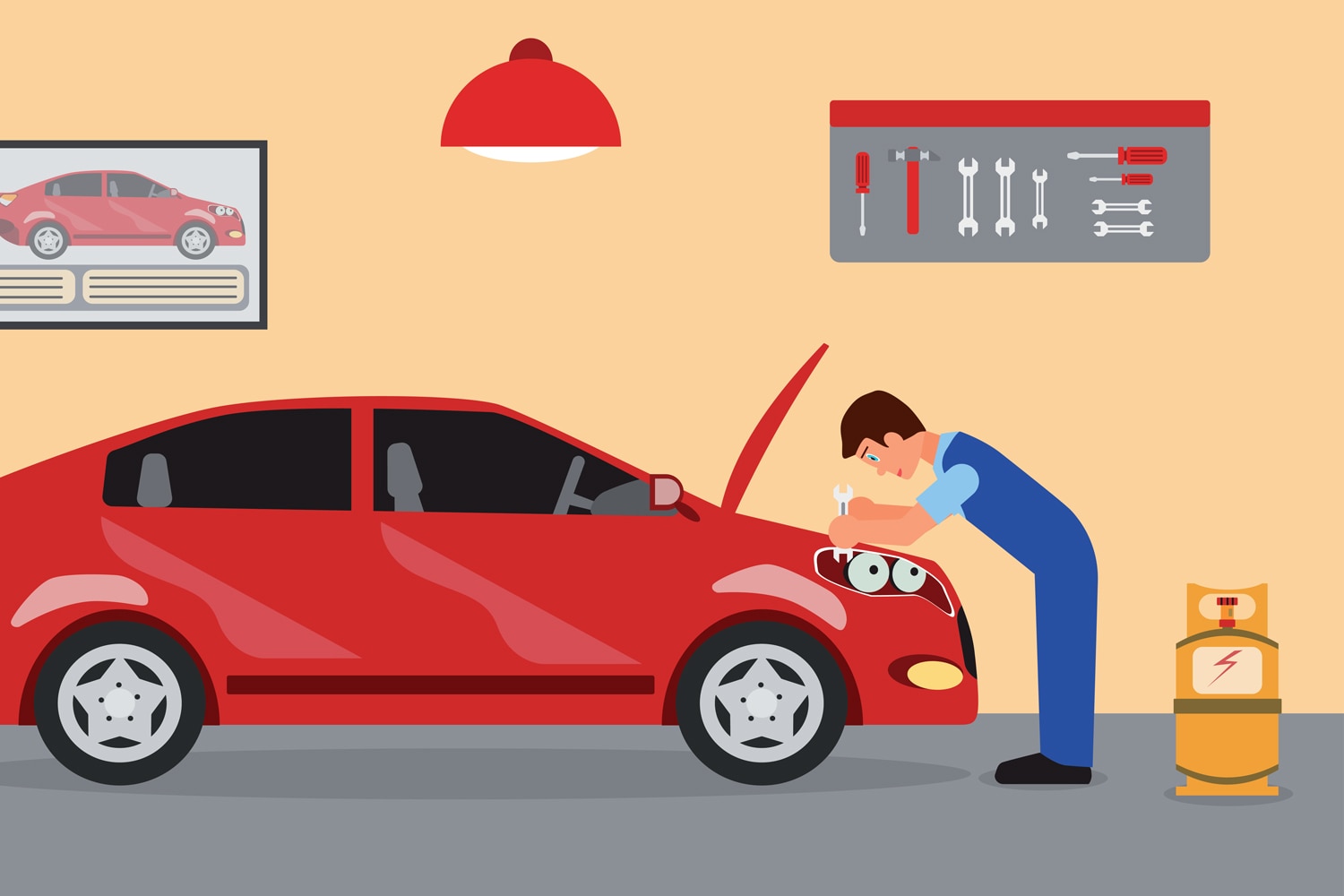
Check the Lights
Even if you’re not planning to drive at night, it’s a good idea to make sure the vehicle's lights work properly . Some highway safety corridors may require your lights to be on at all times for safety. Ensuring they all work ahead of time is smart not just for the sake of visibility, but also to avoid breaking any laws along the way.
Before you leave, be sure to check the following lights on your vehicle:
- Turn signals (front and back)
- Brake lights
- Headlights (high and low beams)
- Backup lights
Take note of any light that doesn’t work and replace bulbs as necessary . If needed, take your vehicle to a mechanic for assistance.
Bring Along a Repair Kit and Emergency Supplies
A final consideration for preparing your vehicle is creating a roadside emergency kit to keep in your vehicle at all times. It’s never a bad idea to be too prepared, especially when going on a road trip.
Here are a few things to pack in your roadside repair kit:
- Road flares
- Jumper cables
- Tire pressure gauge
Here are a few additional items to keep in your vehicle in case of an emergency:
- Emergency blanket
- First aid kit
- Flashlight batteries
- Flint starter
- Ice scraper
- Non-perishable food
- Paper towels
- Triangle reflectors
- Walkie talkies
Preparing your vehicle for a road trip can be costly and time-consuming. But you can never be too safe. Always make a backup plan with an alternative mode of transportation and housing, just in case you encounter any issues along the way.
Don’t forget to bring copies of insurance (including GAP insurance ), prepaid maintenance plans, extended warranty information, registration, and any other information about the vehicle. That way, you’ll know what maintenance issues are covered beforehand and what you’ll be expected to pay for out-of-pocket if you encounter a serious issue while on the road.

Related Articles

Available Super Cruise hands-free tech is just the tip of the iceberg for the new Enclave.

Proceed with caution: Financial woes put the electric SUV in dangerous waters.

From mountains to private racetracks, car manufacturers have some awesome test beds.
- Mon-Sun: 7am - 8pm (Day dependant)
- [email protected]

Should I Get an Oil Change Before a Road Trip?

Are you planning a road trip in the near future? Whether you’re taking a tour of your home state or driving all the way across the country, there’s nothing quite like hitting the open road.
Unfortunately, long car trips provide many opportunities for car troubles and engine failures. At Slick Mobile Oil , we talk to many customers about how to best prepare their vehicle for a long trip. One of the most common questions we are asked is, “should I get an oil change before a road trip?”
To fully answer this question, you first need to understand the importance of oil changes and the benefits they have for your car.
Why Oil Changes are Important
Your car’s engine is made up of many moving parts, and engine oil acts as a lubricant for those parts. It keeps everything running smoothly and prevents friction, which can lead to overheating and catastrophic engine damage.
Regular oil changes are an easy way to maintain your car’s health and increase its longevity. Each time you get your oil changed, your mechanic will tell you when to come back. Their suggestion will come in the form of an appointment date or the mileage by which you should make a return appointment.
Between your regularly-scheduled appointments, you should routinely check your oil level and color. Low oil could indicate a larger problem like a leak, and very dirty oil is a sign that you should schedule an oil change sooner rather than later.
Oil Change Before a Road Trip
The basics of getting an oil change are fairly straightforward, but you might still be wondering, “Should I get an oil change before a road trip?”
If your car is set to hit its next oil change mileage during your road trip, you should schedule an oil change before you set out. The same is true if you’ll be traveling on the date when your mechanic suggested you return for servicing.
If your car has recently been serviced and your oil level is high, there’s no need to make a special trip to your mechanic. Believe it or not, long trips at high speeds are actually better for your engine than small trips. That’s because the engine oil stays heated when you drive long distances, and your car doesn’t have to get going with a cold engine (and cold oil).
Other Road Trip Prep
In addition to changing your oil, there are several other steps that you can take to prepare your car for a long road trip. Check your tire pressure and make sure that your spare is in good condition. Incorrect tire pressure will lower your car’s fuel economy, which adds up when you’re spending many hours on the road.
You can also check the fluid levels in your engine and top off things like power steering fluid, brake fluid, and windshield wiper fluid. If you’re not comfortable doing this yourself, fluid top-offs are an easy add-on to include in your oil change appointment.
Stay Safe on the Road
Make your next road trip smoother and safer by ensuring that your car is as ready as you are. Getting an oil change before a road trip is great for your peace of mind and good for your car, too. It doesn’t get much better than that!
If you want a mobile oil change service that can come right to your doorstep, check out our services at Slick Mobile Oil. We’re proud to make oil changes more convenient for our Colorado neighbors!
- Shop Services
- Contact & Hours


CarParts.com will be back soon!
We apologize for the inconvenience. The CP Team is working on some upgrades to improve our service. Thank you for using CarParts.com!
You can call us at
1-866-529-0412
Reference ID: 18.7fc733e.1714459623.129885a9

Call Buford: 678.765.7926
2959 S. Waterworks Road, Buford, GA 30518
Call Cumming: 678.341.9602
2585 Freedom Pkwy, Cumming GA 30041
Why You Need An Oil Change Before Your Summer Road Trip

Is your car as ready as you are for a trip to the mountains or the beach? Making sure your car is ready for the drive ensures you will be able to enjoy your much anticipated vacation and not be sidelined with vehicle challenges! Everyone wants peace of mind that their car is going to be safe and dependable for any road trip. Make sure to schedule an auto repair and maintenance appointment for an oil change and safety inspection with one of our trusted mechanics here at Team Ryan Automotive. We are happy to serve the Buford GA community with top-quality automotive care.
In this heat, we want to make sure your car is running the best it can be for those upcoming planned beach trips and not-so-planned ice cream runs. Keeping up with regular oil changes will help your car give your family the summer of a lifetime, and here’s how.
#1 - Keeps Your Engine Strong
#2 - keeps your engine efficient, #3 - saves on gas, when to schedule your maintenance.

Best Way to Take Care of Your Tesla

9 Ways to Winterize Your Car

Team Ryan Automotive Wins Gwinnett Chamber Award

678.765.7926
Business Hours
CUMMING, GA
678.341.9602
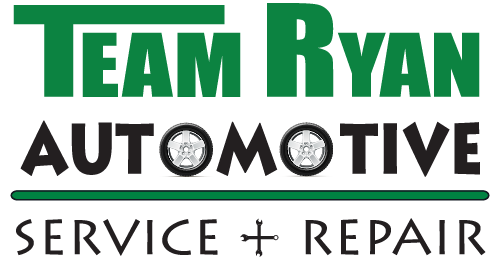
All Rights Reserved
Privacy & Terms

8 tips for servicing your car after a summer road trip
- Long road trips are a staple of the American summer, but they can cause extensive wear-and-tear on your vehicle, leading to a shorter operating life and costly repairs and maintenance.
- With proper post-road trip service, you can minimize the deleterious effects a long road trip has on your vehicle.
- One of the best ways to keep your car in good shape after a long, multiday drive is to thoroughly clean the car both inside and out, protecting the body and the interior against cosmetic damage, mold, and other issues.
- Visit Business Insider's homepage for more stories .

The summer road trip is an iconic American institution.
Whether a cross-country tour with the family, a trip to the beach with friends, or the long haul home from college when the second semester ends, American motorists log millions of collective miles on those summer road trips. A US Department of Transportation study found that the average recreational summer road trip sees an average of a 314-mile drive one-way on such trips, or more than 600 miles in total. Many trips, of course, measure well into the thousands of miles.
Road trips can be enjoyable and relatively inexpensive compared with air travel, but they can do a number on the car, truck, or SUV logging all those miles. To keep your vehicle in its best possible shape, you need to complete a number of car care tasks after the long drive is over, and these go beyond the routine maintenance you offer a commuter vehicle.
Here are the steps to take to service a car after a long summer road trip.
1. Clean the car thoroughly, inside and out
After days on the road, deep cleaning your car is a necessary and timely step. As Mike Schultz, Senior Vice President of Research & Development with Turtle Wax explains: "Not only are smashed bugs unsightly on your ride, but some also contain acidic substances, which can bite into the paint. Simply trying to scrape of stuck-on bugs can damage paint, too."
He recommends using a dedicated car cleaning product to lift away the smashed insects. You should also remove floor mats and thoroughly clean the car's carpets and upholstery and then let it air out for hours to prevent mold growth.
2. Check the tire treads
Long drives can wear down tires past their point of full efficacy and safety, so check the treads once you get home.
As Fred Thomas, Vice President and General Manager for Goodyear Retail explains: "Proper tire depth is an easy way to help maximize safety and performance. There are several ways to check tread depth, including the 'penny test.' Simply insert a penny into your tire's tread groove with Lincoln's head upside down, facing you. If you can see all of Lincoln's head, it's time to replace your tires."
3. Add a fuel stabilizer to the tank
After a long road trip, it's likely you won't use your car as heavily for a period of time, especially if you live in a city and store the vehicle elsewhere.
Adding a fuel stabilizer to the gas tank can help fuel remain fresh and prevent corrosion. If your car is likely to go unused for more than a month following your long drive (or any time) you should use a fuel stabilizer .
4. Top off the fluids
Beth Gibson, Experiential Travel Expert with Avis Car Rental says: "Fluids are like blood for your car, and after a long trip they'll be depleted. To keep levels where they should be and ensure your car is in drivable condition for the next time you use it, replenish windshield wiper fluid, and transmission fluid," and so on.
5. Get an oil change
Even if your car isn't due for an oil change for another few months or few hundred miles, it's a good idea to get an oil change after a long trip.
The extended journey will have put more strain than usual on the motor, especially if your vehicle was towing a trailer or was more heavily laden than normal what with luggage and passengers.
6. Replace the wiper blades
Auto experts recommend you get fresh wiper blades twice a year anyway, but the likely heavy use your windshield wipers saw during a long road trip may necessitate earlier replacement.
Wiper blades usually cost less than $20 and you can install them yourself or have a shop do it, which will likely only charge you for 15 minutes of labor.
7. Run a diagnostics check-up
You can buy a top quality OBD-II scanner that lets you assess all sorts of systems within your car for less than $45, and using such a scanner might detect an issue before it becomes a big problem, saving you an even costlier repair.
After a long drive, these scanners can check everything from filter quality to engine health, and it can explain what's behind that annoying check engine light.
8. Test your brakes
Jenni Newman, editor-in-chief, Cars.com, says: "You gave your car a work out on that long road trip – now it's time to pay extra attention to how it's driving now that you're back on local roads with slower speed limits. Is there a squeal happening when you hit the brakes or a weird sound coming from the wheel? Give your ride a test drive so that you know what work needs to be done when you take it in for maintenance."
- Main content

Should You Get an Oil Change Before or After Your Road Trip? (THREE FACTORS)
Table of contents, so, should you get an oil change before or after your road trip, 1. when was the last oil change, 2. check the state of the oil, 3. plan ahead for an oil change, what is the best interval for oil changes, 1. keeps your engine strong, 2. saves on fuel, 3. maintains an efficient engine, changing your oil after a road trip, car maintenance to do before a road trip, bottom line.

Keeping up with your car’s maintenance will help to ensure that your vehicle will last during a road trip.
This is why you probably wonder whether you should change the oil before or after a road trip.
If your car reaches the time interval or mileage for the needed oil change during your road trip, you should change the oil before heading down the road. You don’t want issues when far from home, that may interrupt your road trip plans. However, if you have lots of miles to go until your next oil change after taking into account the extra miles driven on your road trip and the time for an oil change won’t be due until after your road trip, you don’t have to change the oil. Generally, a road trip is not a reason for an oil change, only the miles traveled.
Should You Wash Your Car Before A Road Trip? (FIVE REASONS!)
Three Factors For Determining When to Get an Oil Change
You don’t necessarily have to change the oil before heading on a road trip.
Here are some factors to consider to help determine if you should change the oil before or after a road trip.
All automakers have recommended intervals on how often you should change the oil in each car.
The period is indicated on the owner’s manual, so you can check your vehicle’s recommended oil change interval if you aren’t sure.
However, remember that this figure is just a recommendation.
If you are driving in harsh environments with many particulates in the air, you should consider getting the oil change as soon as possible.
If you are above the recommended interval, close to hitting the maximum number of miles, or you will hit past the recommendation on the road trip, you should change the oil before the trip.
It’s better to have it changed before you go rather than risking having to find a station to change the oil when in an unfamiliar town.
It is best to check your oil even if you are in the recommended number of miles between the oil changes and you don’t technically need one.
This will help you determine if you require to top the oil off as well as see whether the oil is dirty enough to warrant a change.
While it won’t be in its typical fresh amber color, it should not be very black and thick.
If the oil is very dark and dense, then ensure you have it changed before heading out for a road trip.
If you decide you need to change your car’s oil before going for the road trip, don’t wait until the last minute.
While an oil change is a straightforward process, you will want to ensure everything is seamless by taking frequent short drives around your place for some days before hitting the road.
Therefore, scheduling your oil change a few days or a week before the road trip is better.
There is much contradictory information about engine oil, its kind, and how often it should be changed.
Most car technicians are no longer firm about their 3,000 miles interval oil change.
However, they all agree that car owners should follow the recommended oil change interval on the owner’s manual. Another clear sign is when the oil change light appears on your car.
Today, the oil chemistry combined with enhanced engine technology in recent years has lengthened the interval for oil changes considerably.
Based on the model and make of your car, the recommended oil interval could be between 5,000 to 15,000 miles.
Therefore, ensure you check out your manual.
What Are the Pros of Changing Your Oil Before a Road Trip?
Now that you know it’s best to change your oil before your road trip, let’s look at the advantages of changing your oil before your trip.
Ensuring you have clean and fresh oil ready before you head out for a road trip will keep your engine strong.
You probably have a travel budget for fuel if you plan to go on a road trip.
However, you should remember that an engine with fresh oil operates more efficiently and consumes less fuel per mile.
This will increase your MPG and save you cash on the process.
There is a reason why the saying goes, ‘running like a well-oiled machine’.
Having the engine well-oiled will help the engine to operate smoothly and more efficiently.
For the different engine moving parts to work in perfect harmony, you will need to have good quality, amount, and quantity of oil in the engine at all times.
As long as you are within the recommended automaker limits, there is no need to change your oil immediately after a road trip.
You should only change the oil after a road trip if you are within the set limit on the user manual or the oil looks highly dark and thick. Otherwise, your car is still good to go.
But even if the vehicle is not due for a scheduled oil change for another few hundred miles or months, it is a good idea to have it changed after a long road trip, although it’s not a must.
Besides having an oil change, it would also be wise to ensure all your car systems are functioning at peak efficiency before you start your road trip.
Check tire pressure, engine coolant, lights, mirrors, windshield wipers, air filter, and transmission fluid.
However, it is risky to have the service done just before the trip.
For instance, the drain plug might be left loose, causing oil leakage.
To avoid such incidents, as you plan for your road trip, ensure to schedule the needed oil change and maintenance service about a week before you hit the road.
A properly maintained car will ensure your road trip doesn’t get put off by unpredicted repairs.
Inspecting the oil before heading out will help ward-off unforeseen predicaments on the road trip.
To be safe, you should get an oil change a few weeks before embarking on a road trip to ensure everything is seamless.
It’s also wise to schedule an auto repair and maintenance to ensure other car components and fluids are in perfect condition.
Privacy Overview
Nearest Store
- (907) 202-7405
- Get Directions
- Store Details
Mon-Fri: 8:00 AM - 6:00 PM
Sat: 8:00 AM - 5:00 PM
Find Another Store
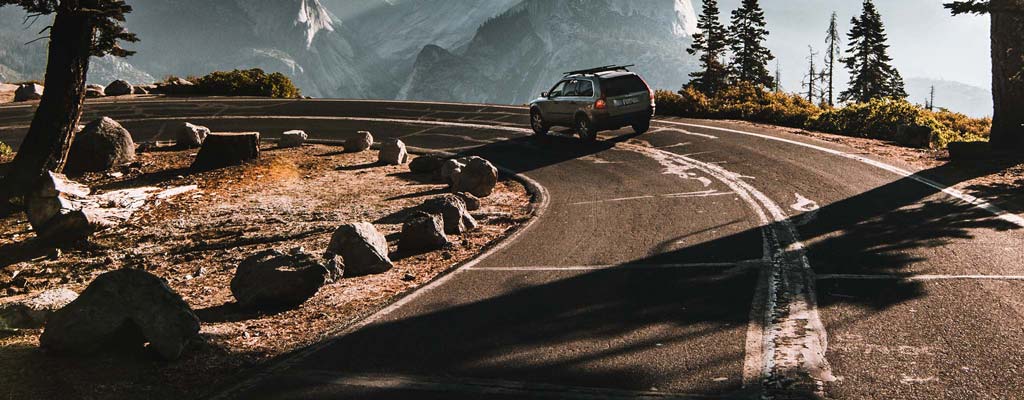
Essential Car Maintenance Before a Road Trip: Checklist & Tips
Got big road trips planned for the months ahead? Instead of getting stranded or spending a chunk of your vacation at a repair shop, we have some tips to help you reach your destination.
Car Maintenance to Consider Before Your Road Trip
Don’t leave your family’s safety and your long-awaited road trip to luck. Plan ahead with these pre-trip checklist items you can do at home and with some help from Les Schwab.
Get a Free Pre-Trip Safety Check at Les Schwab
Our pros will check the air pressure on all your tires including the spare. They’ll also do a visual inspection of your tires, wheels, alignment, shocks and struts, brakes, and battery. If we find anything, we’ll make recommendations and show you all your options.
Schedule your safety check
Assemble a Road Trip Safety Kit
Depending on the time of year, must-have items include water (for your vehicle), flares, a battery-operated radio, and a fully-charged jump-starter (which can be used to charge phones if your vehicle battery dies). You’ll also want seasonal or leather gloves, a hat (for either shading your face from the sun or for warmth), and a blanket to kneel on if you need to change a flat tire on the side of the road. Learn more about what to include in your summer or winter road trip safety kit.
Get Your Tires Road Trip Ready
Before your next road trip, double-check the tread on your tires. You can do this at home with the penny test . Or stop by Les Schwab and we’ll check the tread on your tires for free. We can even rotate those tires to prolong the tread life and give you added control.
Top Off the Fluids
Fill your gas tank right before you leave. Other fluids to check and fill as needed include your windshield wiper fluid, antifreeze, brake fluid, power-steering fluid, transmission fluid, and oil. For electric vehicles, charge the battery the night before. Finally, double-check that your cup holder has your favorite fluid (soda, coffee, water, tea) ready to go.
Change the Oil
Cross country road trips can add hundreds or even thousands of miles to your vehicle. Do your engine a favor and get the oil changed before you go. Some Les Schwab locations can help make that oil change happen. Find a location near you.
Check Your Brakes
Good brakes are essential anytime you get behind the wheel. But it’s even more important on a long road trip where you'll find yourself in heavy traffic and driving on unfamiliar roads. Get your brakes checked at Les Schwab.
Check Your Visibility
This includes how well you can see the world and how well other drivers can see you. Check your headlights (including your high and low beam bulbs), taillights, backup lights, the lights on your rear license plate, and windshield wipers (Les Schwab can check those wiper blades for you). Replace them, or get them replaced, as needed. Clean your side mirrors and remove the film on your headlight and fog light lenses.
Verify the Spare
Make sure it is properly inflated and that you have a jack. Also, confirm that your lug wrench fits the lugs on every wheel. If you have a locking lug on each wheel, be sure you have the socket key. Don’t have a spare tire in your vehicle? Spare tire options.
Inspect Your Shocks and Struts
The shocks and struts on your vehicle help with ride control, comfort, and safety. The pros at Les Schwab can do a free visual inspection of your shocks and struts.
Are you Towing a Trailer?
Safety, load ratings, and proper load management, as well as suspension enhancements, go hand-in-hand. The experts at Les Schwab can help you choose the right set of trailer tires, upgraded shocks, and other accessories and get them installed before you hit the road.
Use Our Printable Checklist
Planning which of the National Park Service locations to visit, where to camp, and when to stop for dinner is one thing. Ensuring your vehicle is ready for that road trip is another. The pros at Les Schwab have put together an Essential Summer Road Trip Checklist to help.
Tips on Planning and Packing For a Road Trip
Are you driving to a theme park or somewhere a bit more rugged? Who is coming on the adventure with you? Planning ahead goes beyond car maintenance. It also includes cargo space and what to pack. Check your vehicle’s driver-side door panel before you start packing the car or truck with luggage, kayaks, and more. Look for the area that reads, “The combined weight of occupants and cargo should never exceed.” There you’ll find a number in kilograms and pounds. That maximum capacity for your vehicle includes people and everything else you pack. To avoid issues with brakes, suspension, steering, and more, stay at or below that number.
Some lighter items you can always pack include:
- Paper towels
- Extra set of wiper blades
- Maps (just in case your phone doesn’t work)
- First-aid kit
Verify Your Roadside Assistance
Whether it’s AAA or another roadside assistance company, double-check that the policy is current. Have the phone number and other vital information about your coverage available before you go on any long trips.
Make Sure Your Car Is Ready To Go at Les Schwab
Get your car, truck, minivan, SUV, or CUV ready for all of your summertime adventures. Schedule a free pre-trip safety check at any Les Schwab location. We’ll give your tires, wheels, battery, brakes, shocks, struts, wiper blades, and alignment a visual inspection and make recommendations if anything needs attention.
Schedule an Appointment

Reservations
Insurance replacement, buying a car, about car sales, car rental locations, more locations, top us locations, loyalty program, redeem points & perks, customer support.
06/17/2022 • 4 min
The Pros and Cons of a Do-It-Yourself Oil Change
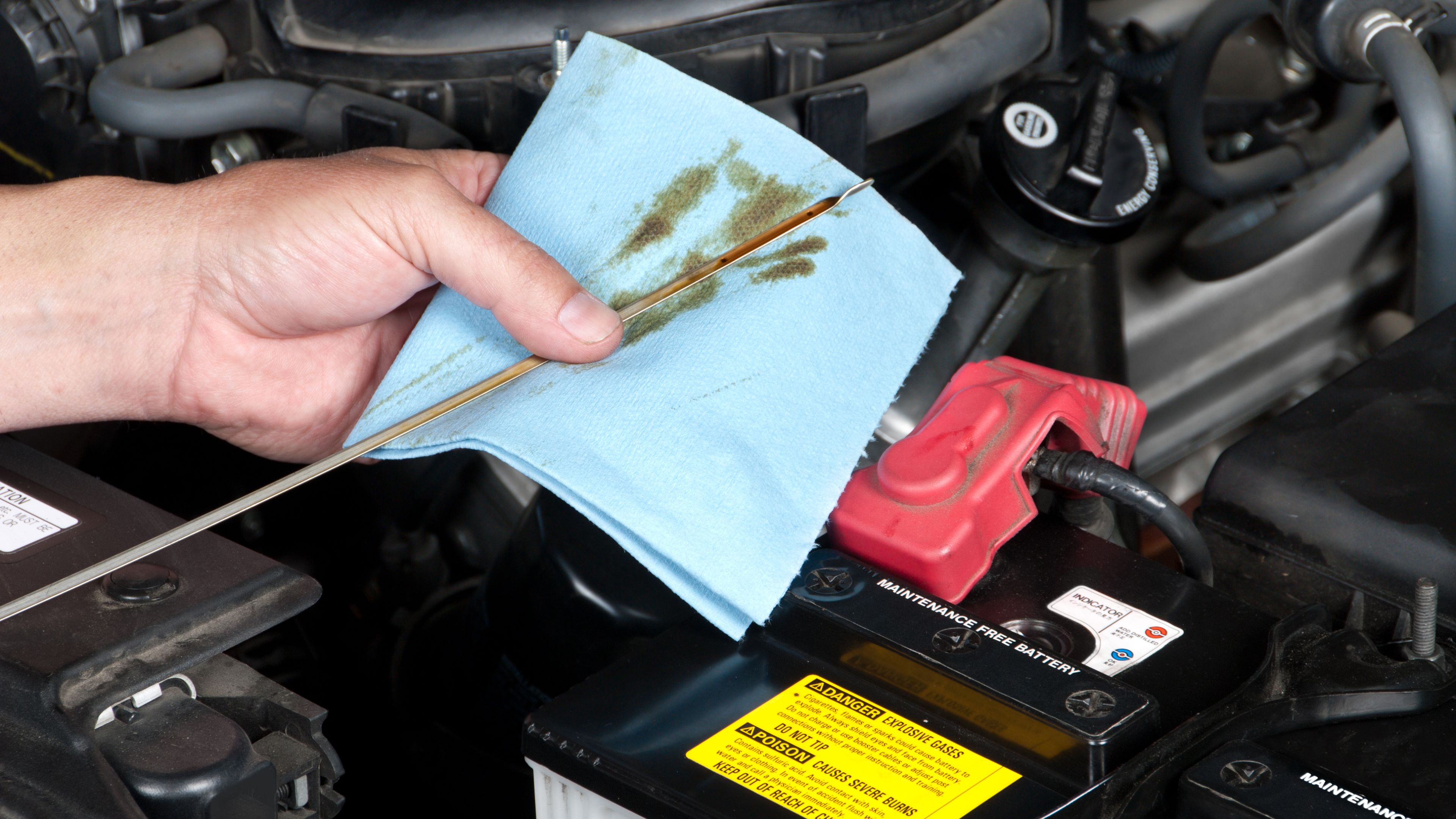
A car is often one of life’s essentials. From commuting and chauffeuring the children to running errands or taking family vacations, we depend on our cars every day. Unfortunately, they are also one of the most expensive items we own; it’s not only the cost of buying and insuring a car, but also the cost of gas and ongoing maintenance. However, there are ways to save money on regular car maintenance, such as do-it-yourself oil changes. But do the financial perks outweigh the potential pitfalls? Learn more about the pros and cons of changing your own oil and decide whether it’s a task you could tackle.
Pro: Less Strain on Your Wallet
For cars that take standard oil, the average cost of a professional oil change falls between $35 and $75. If your car needs synthetic oil, you can expect to pay anywhere from $65 to $125, although synthetic oil tends to last longer, so you will recoup some of this cost. When you don’t have to pay for labor, the average price for materials – an oil filter and five quarts of oil – falls between $30 and $45 plus tax. This also depends on the grade and type of oil you require.
Tip: Retail stores purchase auto supplies in bulk and mark up resale prices. Websites like Amazon and eBay can sometimes offer better deals on oil and filters than brick-and-mortar stores.
Bear in mind that a DIY oil change will also require a few basic tools, including:
- Latex gloves
- Replacement drain plug washer
- Jack stands
- Oil filter wrench
- Oil drain pan
- Socket wrench
- Wheel chocks
This could mean that you won’t save much money the first few times you change your own oil. However, consider the fact that most manufacturers recommend an oil change every six months or 7,500 miles and you will soon start to see the savings add up.
Con: Remembering to Change the Oil
Most automobiles using standard oil require an oil change every 7,500 miles or every six months, whichever comes first. When you have your car serviced and the oil changed by professionals, the technician will usually place a handy little sticker on your windshield inscribed with your next service date. When changing your own oil, it's up to you to keep a record of the oil change date and mileage to keep your car running smoothly.
Tip: Stash a small logbook in your glove box for recording mileage and oil change dates and add a reminder to your calendar.
Pro: Might Be Quicker
If your schedule only allows you to take your car to a mechanic during peak hours, you might end up waiting a while. If you have experience with DIY oil changes, expect to have it done in around 30 to 45 minutes. Remember, the more you do it, the faster you’ll get!
Tip: The service express lane at your car dealership may offer a less-crowded alternative to a quick-stop shop and prices are generally comparable.
Con: Mistakes Can Be Costly
Although changing motor oil isn't difficult, it's important to be careful and thorough. Using the wrong grade of oil can affect the car’s hydraulic components and lead to engine damage. Adding too little oil could also mean that engine parts become dangerously under-lubricated, while overfilling can cause leakage in engine seals and gaskets. Mistakes as simple as failing to tighten the oil drain plug or forgetting to remove the old oil filter gasket can drain the oil from your car without your knowledge. In the worst-case scenario, these issues could lead to you needing a new engine. To ensure the most effective DIY oil change, follow these top tips:
- If the engine is hot, cool the car down for about 30 minutes before changing the oil.
- Warm a cold car up for a few minutes before changing the oil for quicker drainage.
- To prevent spills, use a funnel-top drain pan.
- Keep a roll of paper towel handy and wear latex gloves.
- Purchase an oil-absorbent product for quick clean-up.
- Protect the floor of your garage by laying an old shower curtain under the car and hose it off when finished.
- After filling the oil filter, spread a little bit of oil onto the seal before you install it for a better fit.
- Use a torque wrench to tighten the oil plug and check the spec for your vehicle (typical spec is 25 foot-pounds).
- When pouring oil, position the quart with the spout at the top (not the bottom), and pour slowly.
Whether you depend on professionals for an oil change or tackle the job on your own, regular maintenance is a must for smooth automobile performance. Connect with us on Facebook to share your oil change tips and tricks.
Where do you want to go today?
Related articles, using technology to enjoy your time on the road.
The modern car has many features that make it both, safer and easier to drive. Here, we look at some of the most important and useful ones to have.
How to Drive for Lyft with a Hertz Rental Car
Driving for Lyft is a great way to be flexible with your working pattern, meet interesting people, and get the chance to be your own boss. Sounds like living the dream, doesn’t it?
Thinking of Becoming an Uber or Lyft Driver? Rent with Hertz
Are you considering driving for Uber or Lyft, but don’t own or a car (or don’t want to use your personal vehicle?). Renting a car with Hertz is a flexible, short-term commitment that can help you get on the road to earning. In addition to saving you the personal cost and responsibility of owning and maintaining a vehicle, renting a rideshare vehicle with Hertz means you can enjoy benefits like unlimited mileage, regular vehicle maintenance, insurance coverage, and more. Learn the full benefits of the Hertz Uber and Lyft rideshare programs and how to get started.
- ALL MOSCOW TOURS
- Getting Russian Visa
- Top 10 Reasons To Go
- Things To Do In Moscow
- Sheremetyevo Airport
- Domodedovo Airport
- Vnukovo Airport
- Airports Transfer
- Layover in Moscow
- Best Moscow Hotels
- Best Moscow Hostels
- Art in Moscow
- Moscow Theatres
- Moscow Parks
- Free Attractions
- Walking Routes
- Sports in Moscow
- Shopping in Moscow
- The Moscow Metro
- Moscow Public Transport
- Taxi in Moscow
- Driving in Moscow
- Moscow Maps & Traffic
- Facts about Moscow – City Factsheet
- Expat Communities
- Groceries in Moscow
- Healthcare in Moscow
- Blogs about Moscow
- Flat Rentals
Driving in Moscow – Russian road rules
Car-sharing in moscow.

Yandex.Drive parking at Sheremetyevo Airport
Moscow has the largest car-sharing park in the world with more than 15 000 cars waiting for you to be rented for any amount of time, starting from 1 minute. Cars can usually be left almost anywhere within MKAD and in Moscow airports. City parking is also free for those cars. To be able to rent a car, you should register yourself in an app of the company providing the service. There are more than 15 car-sharing operators in Moscow, here are the market leaders:
- Delimobil: https://delimobil.ru
- Yandex.Drive: https://yandex.ru/drive/
- BelkaCar: https://belkacar.ru
- Citydrive: https://citydrive.ru
Long term car rental in Moscow

Sixt pick up & return office
Hertz, Europcar, Sixt and Avis have offices in three of four Moscow airports ( Sheremetyevo , Domodedovo and Vnukovo ). Budget has no offices in Russia. It is always cheaper to rent a car using company local site, not the international one. For a night pick up you should contact local rent office a few days upon arrival.
- Hertz Russian site: https://www.hertz.ru/
- Europcar Russian site: https://europcar.ru
- Sixt Russian site: https://www.sixt.ru
- Avis Russian site: https://www.avisrussia.ru
Roads & regulations in Russia

Vnukovo exit road
- Driving is right-sided.
- In the built up areas the speed limit is 60 kmph.
- In none built up areas – 90 kmph.
- On the off-city highways – 110 kmph.
- Some highways around Moscow have 130 kmph limit (marked with green signs).
- The minimum age to drive a car is 18 (16 for motorcycles, 20 for buses).
- Wearing of seat belts is mandatory in both front and back seats.
- Speaking on a mobile phone or even holding it in a hand while driving is a serious offence.
- Turning right at a red light is not allowed when there is no special green arrow traffic light.
- It is illegal for children under the age of 12 to travel in the front seat.
- Dipped headlights must be used during the day.
- It is illegal to drive a car with mud on the license plates.
Required documents

Russian registration certificate, driver license and vehicle insurance
While driving in Russia every driver is required to have the following set of documents:
- Passport ( Russian Visa and migration card is a must for foreigners).
- Driving license (if you plan to stay in Moscow for more than 6 months, your national license will not be enough, you have to obtain Russian license).
- Registration certificate (pink laminated card).
- Vehicle insurance (green or purple paper or its digital copy).
- A power of Attorney (only for rented cars).
Fines in Russia

Traffic police officers
Traffic police officers can stop every car just to check the documents. Every road inspector must introduce himself pointing his title and last name.
The cameras can record not only speeding but other minor violations as well. Driving along the bus lanes, driving in the oncoming lane, incorrect parking or even driving without a full stop where there’s a stop sign – all those violations are in their competence. Numerous traffic cameras are installed in all city regions along every major road. The detailed list of cameras and places of their location is presented on this site . After the camera registered a violation, the appropriate fine is sent to the owner of the car by post and must be paid for a one-month term (there’s a 50% discount if you pay within 2 weeks). For serious violations (Russia has a zero tolerance policy on drinking and driving), the driving license can be confiscated by a court.
All the fines should be paid only at the bank or via internet, so never give any money (or bank cards) to the road inspectors.
Moscow parking rules

Moscow parking ATM
Moscow has paid parking in the city center, within the Garden Ring. There are several parking zones and also special fares for specific streets. Parking within the Boulevard Ring may cost up to 380 roubles (€4) per hour, 50 roubles (€1) for the first hour and 150 roubles (€2) for every next hour within the Garden Ring and 60 rubles (€1) per hour within the TTK ring.
How to pay:
- SMS to 7757 (Russian SIM-cards only).
- Moscow Parking Portal
- Mobile App available for iOS and Android .
- Parking ATM (mostly with credit cards only).
- Monthly or annual parking ticket. The parking ticket holder can use city parking spaces daily without payment during the chosen period (month or year).
Maps and traffic in Moscow
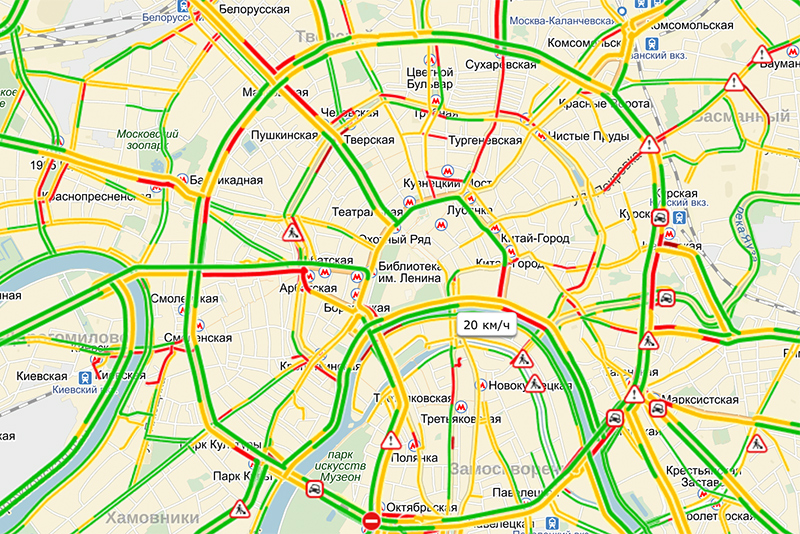
Yandex.Maps service
Moscow has a very hard traffic situation. To avoid long traffic jams use Yandex.Maps service. It offers reliable live traffic map (apps are available for iOS , Android and Windows Phone ) with online navigation. Offline Moscow map is available. It is the most popular and up to date service. Yandex can show and search latin-written street names.
Getting Russian driver license

Moscow driving school
A foreigner, temporarily staying in Russia can drive with an International Driving Permit (IDP) or national driving license, translated into Russian and notarized. Foreigners that are going to stay in Russia for more than six months must obtain a Russian driving license. To apply for a Russian driving license, you must provide the following documents:
- Passport and valid Russian visa and legally certified copy.
- The document confirming a place of continuous or temporary registration.
- Medical certificate (available from any major health clinic).
- National driving license, legally certified copy and translation.
- Photo of 4х6 cm.
- The receipt confirming payment of the state duty.
- Application for passing the examination.
- The receipt on examination payment.
If your national driving license is still valid, you will only have to pass a general driving test. If your license has expired, you must also pass a practical driving exam to get the Russian license. However, to do so, you must speak fluent Russian: the theoretical and practical instruction is conducted only in Russian. If you want to get your first driving license in Russia, you should also go to a local driving school, pass a medical test, have about two months of theoretical and practical driving instruction, and pass state driving exams.
Moscow gas stations

Gazpromneft station
We suggest you to fill up at good gas stations nets, such as Lukoil, BP, Rosneft, Shell, Gazpromneft or TNK. Gas stations are particularly can be met outside the Garden Ring. The price of petrol in Russia is still significantly lower than in Europe.
Winter driving in Moscow

Snowfall near GUM
Driving in Moscow in winter could be a difficult thing, especially if you are not used to such weather conditions. During the winter period, remember to keep in your car a good snow brush and an anti-frost windshield washer fluid. Before winter arrives, have your car protected with winter tires. Studded tires are allowed and highly recommended outside of Moscow. It is better to change tires in advance – in autumn, and not to wait until the first snow. Otherwise, you run the risk of spending a lot of time in queues to service stations. Do not hurry to change winter tires in spring; it is better to wait until April.
PLAN YOUR TRIP WITH US

Happy to help you with everything, from general plan of your visit to plane tickets or hotel stay. We may also support your Russian Visa request with a letter of invitation if you need so.
SEE OUR TOURS

We host around 60 tours every month in English, Russian, German, Italian, Spanish, Arabic and other languages. All of our tours =>
SAVE THIS LINK

If you only started to think about visiting Moscow, just save our site in your browser’s bookmarks or follow us on Facebook and Instagram to be in touch.
Our Private Tours in Moscow
All-in-one moscow essential private tour, moscow metro & stalin skyscrapers private tour, moscow art & design private tour, soviet moscow historical & heritage private tour, gastronomic moscow private tour, «day two» moscow private tour, layover in moscow tailor-made private tour, whole day in moscow private tour, tour guide jobs →.
Every year we host more and more private tours in English, Russian and other languages for travelers from all over the world. They need best service, amazing stories and deep history knowledge. If you want to become our guide, please write us.
Contact Info
+7 495 166-72-69
119019 Moscow, Russia, Filippovskiy per. 7, 1
Mon - Sun 10.00 - 18.00
You are using an outdated browser. Please upgrade your browser .
- Moscow Travel and City Excursions
Our 20 Best Moscow Day Tours of 2022
See all that Moscow has to offer by choosing one or more of our incredible Moscow day tours. Visit Red Square , St. Basil’s , the Kremlin or perhaps a vodka museum and the fantastic Moscow metro system , we have it all. Our expert, informative and fun guides will help you get to know Europe’s largest city. Please click on the day tour details to learn more or contact us for more information about our Moscow tours using the form at the side of the page. You can also schedule a call with one of our Russian travel specialists to learn more.

Head to the heart of Moscow with a professional guide on a 4-hour private walk through the city center. See Tverskaya and Old Arbat streets, Theatre Square with the world-famous Bolshoi Theatre, and the former KGB headquarters...
- Schedule Daily 09:00 - 20:00
- Languages English-speaking guide is guaranteed. Other languages are on request.
- Walking tours Transportation is not included
- PRIVATE TOUR This is a private tour, there won't be other people in your group

Panoramic City Tour. This Moscow tour is a great start to your trip and the best way to get acquainted with many of the city’s major highlights. Our professional guide will escort you on a route that includes Vorobyevi...
- Schedule Daily 09:00 - 18:00
- Tours by car Transportation by private car/minivan is included

This tour offers a detailed look into the history and present-day life of the Jewish community of Moscow. On the tour, you will visit sites connected with the cultural and religious life of different Jewish families, as well...
- Schedule Monday, Tuesday, Wednesday, Thursday, Sunday 11:00 - 20:00 Friday 10:00 - 14:00 Saturday not available

The tour begins with a drive or walk down Tverskaya Street – a Soviet masterpiece. In the years of Soviet power, Tverskaya began to undergo a transformation: it was widened to two and a half times its original size,...

This is a very interesting and insightful tour. You will visit places connected with Stalin’s terror - a time of great repression and fear. You will be shown monuments to the victims of the repression. You will then...

You will be told of the street’s interesting history and view the street’s artisan culture. You will also have the opportunity to view and purchase souvenirs from the street’s many craftsmen....

The Kremlin is truly a fascinating structure, at the same time it is an ancient tower, the city’s former military fortification, a palace, an armory, the sovereign treasury and the workplace of the Russian President....
- Schedule Monday, Tuesday, Wednesday, Friday, Saturday, Sunday 10:00 - 17:00 Thursday not available

This world-famous gallery contains masterpieces of Russian art beginning in the 10th century up until today. You will view exquisite Russian icons and paintings from the 18th and 19th century including works by Rublyov, Karavak,...
- Schedule Monday not available Tuesday, Wednesday, Sunday 10:00 - 17:00 Thursday, Friday, Saturday 10:00 - 20:00

Tour of the Novodevichy Monastery. Founded in 1524 by Grand Prince VasiliIoanovich, the original convent was enclosed by fortified walls and contained 12 towers. The structure served as a convent for women of noble birth...
- Schedule Daily 09:00 - 17:00

The Moscow Metro is one of the largest and most grandly built metro systems in the world. It was meant to be a showcase of the Soviet Union’s achievements for both the Russians themselves and for visitors from abroad....
- Schedule Daily 10:00 - 17:00

The history of Kolomenskoye stretches back for centuries. In 1380, Dmitri Donskoi’s army passed through Kolomenskoye on their way to the Kulikovo battlefield, and it was here that Donskoi celebrated his victory over...
- Schedule Monday not available Tuesday, Wednesday, Thursday, Friday, Sunday 10:00 - 17:00 Saturday 11:00 - 18:00

Considered by some to be the Russian Vatican, Sergiev Posad is the temporary residence of the Patriarch of the Russian Orthodox Church. The Trinity St. Sergius Monastery (Lavra) was built in the first half of the 1340s by...

The Tsaritsyno Estate is located in the southern part of Moscow. The estate was constructed for Catherine the Great by the Russian architects Bazhenov and Kazakov in a romantic gothic style. The complex includes a landscape...
- Schedule Monday not available Tuesday, Wednesday, Thursday, Friday 11:00 - 17:00 Saturday 11:00 - 19:00 Sunday 11:00 - 18:00

The Kuskovo Estate often called the Moscow Versailles due to its perfectly preserved French park, is an example of an 18th century, luxurious Moscow summer residence. Its history dates back to 1715, when the village of Kuskovo...
- Schedule Monday, Tuesday not available Wednesday, Thursday, Friday, Saturday, Sunday 10:00 - 18:00

Vodka is an important component of Russian life, an element of national identity and everyday culture. We invite you to visit the Vodka Museum and feel the atmosphere of long-gone centuries. You will get to know the story...
- Schedule Daily 10:00 - 19:00

Take this opportunity to learn more about the Russian writer Lev Tolstoy. During the visit to the museum you will see part of a vast collection of exhibits connected to Tolstoy and his family including books and personal...
- Schedule Monday not available Tuesday, Wednesday, Friday, Saturday, Sunday 10:00 - 17:00 Thursday 12:00 - 19:00

This apartment museum located close to Patriarch Ponds became the prototype of the "bad apartment" described in the novel "The Master and Margarita." Currently the museum's collection includes more than three thousand...
- Schedule Monday not available Tuesday, Wednesday, Friday, Saturday, Sunday 12:00 - 19:00 Thursday 14:00 - 21:00
Express to Russia specializes in Moscow city excursions, an essential part of your Moscow travel itinerary. We offer a large variety of day excursions throughout Moscow and its suburbs. From Red Square and the Kremlin to a city tour of Moscow’s Old Arbat Street or the Moscow metro , an excursion specializing in Stalin and the KGB and much more. No travel to Moscow is complete without taking a few of our day tours that most meet your interest in Russia.
Moscow City Tours
Our Moscow day excursions can be organized on foot or with transport. All of our excursions are led by an experienced guide, specializing in the subject matter of the tour. Excursions are privately run and can be booked for 1 traveler all the way up to large groups of travelers. We run our Moscow city tours in every season. This is because travel to Moscow is excellent in any season. In the summer take a stroll through Gorky Park or take a riverboat tour along the Moskva River. In the winter, see Moscow’s winter wonderland of ice and snow and then settle in for a cozy lunch or dinner with a hot bowl of borsht. In winter, spring and fall, you can beat the crowds at all of Moscow’s main attractions and museums. Regardless of when you come, Express to Russia will make sure that your trip is one of your best vacations ever.
Our travel brands include

Express to Russia
Join us on Facebook
We invite you to become a fan of our company on Facebook and read Russian news and travel stories. To become a fan, click here .
Join our own Russian Travel, Culture and Literature Club on Facebook. The club was created to be a place for everyone with an interest in Russia to get to know each other and share experiences, stories, pictures and advice. To join our club, please follow this link .
We use cookies to improve your experience on our Website, and to facilitate providing you with services available through our Website. To opt out of non-essential cookies, please click here . By continuing to use our Website, you accept our use of cookies, the terms of our Privacy Policy and Terms of Service . I agree

Moscow Itinerary: How To Spend 3 Days In Moscow
By: Author Lotte
Posted on Last updated: March 2, 2023
Categories Trans Mongolian Express

Moscow is the capital of Russia and there are few cities in the world that have played such a significant part in history.
Home to the Kremlin, the Red Square, the colorful St. Basil's Cathedral, and many more famous landmarks, Moscow is a city like no other.
This Moscow itinerary will help you plan your trip and make the most of your time in Moscow. From the best places to see in Moscow to how to get around, this post has got you covered.
Moscow itinerary

Disclosure: Some links in this post are affiliate links. If you make a purchase through one of these links, we may earn a small commission (at no extra cost to you!). We're very grateful when you use our links to make a purchase:-).
Moscow 3 day itinerary: map with highlights
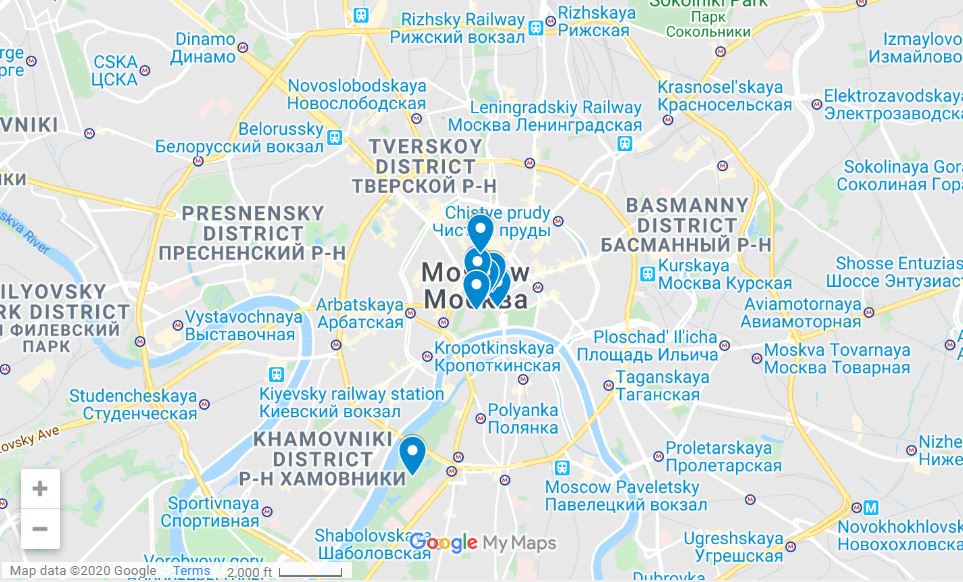
Click here for the interactive map .
What to do in Moscow in 3 days
- Day 1: The Red Square, GUM Department Store, St. Basil's Cathedral, Lenin's Mausoleum, and the State Historical Museum.
- Day 2: The Kremlin, the Cathedral of Christ the Saviour, Gorky Park, and the Bolshoi Theatre.
- Day 3: Izmailovsky Market, Bunker 42, and Zaryadye Park.

Important things to know when planning a trip to Moscow
The best time to plan a trip to Moscow is April-May and September-October . During these months temperatures are (generally) quite comfortable, though even in April there can be a bit of snow! The summer months are hot, both in regard to temperature as well as activities in the city. While it's a nice time to visit, it's also the busiest time of the year to visit Moscow. Hotel prices reflect this as well and summer definitely isn't a great time for budget travelers to visit Moscow. Winter in Moscow is cold, and I mean seriously cold (-15°C isn't rare). However, if you can withstand the subzero temperatures and freezing winds, it can be a magical time to visit. A snow-covered St. Basil’s Cathedral is a sight you will never forget. Keep in mind that days are short in winter and be sure to bring plenty of warm winter clothes!
The official currency in Russia is the Russian Ruble (₽ or RUB). Here you can find the current exchange rates, at the time of writing €1 is approximately 70RUB and $1 is around 62RUB.
Yes, you probably do. Getting a visa for Russia requires a bit of time and effort. You need to fill out several forms and provide a detailed travel itinerary and information about your accommodation. Also, you will need a Visa Support Letter which can be provided by your travel agency or your hotel. Depending on your nationality, there may be additional requirements, please refer to the information provided on the website of your country's Embassy in Russia.
While most of the things to see in Moscow listed in this post are within walking distance of each other, sometimes you will have to travel a bit further afield. The best way to get around in Moscow is by metro. It's cheap and efficient and a sightseeing activity in itself, because Moscow has the most beautiful metro stations in the world ! Among the most exquisitely decorated stations are Komsomolskaya, Novoslobodskaya, Mayakovskaya, Taganskaya, and Prospect Mira Station, but there are many more worthwhile stations to be found in the Moscow underground. You can purchase a single ticket from one of the ticket machines or get a rechargeable Troika Card when you plan on taking the metro several times. Read more details on how to use the Moscow metro here . If you prefer to get around by taxi, that's possible too. We used the Gett app to order a taxi (similar to Uber) to avoid confusion about our intended destination and having to negotiate in Russian. A convenient extra for families is the Gett Kids option, these cars are outfitted with a car seat.

The best things to do in Moscow
While you could easily spend a week in Moscow (or more), most of us, unfortunately, don't have that much time available.
This 3-day Moscow itinerary will guide you to the most popular and important places to visit in Moscow, as well as to some of the more unusual things to do in Moscow.
Below you can find the list of the Moscow sightseeing highlights included in this post.
The Red Square
Gum department store, st. basil's cathedral, lenin's mausoleum, the state historical museum, the kremlin, cathedral of christ the saviour.
- The Bolshoi Theatre
Izmailovsky Market
Zaryadye park.

Plan your trip like a pro with these tools: ✈️ Find the best flight deals on Kiwi.com . ? Get the best car rental deal for your road trip on Rentalcars.com . ?️ Find your dream accommodation on Booking.com or Agoda . ? Book the best tours via Get Your Guide , Viator or Klook . ? Plan your journey with the Lonely Planet . ?️ Travel safely and get reliable travel insurance from Safety Wing .
Moscow itinerary day 1

There is no better place to start your first day in Moscow, than at the world-famous Red Square.
This square is considered the central square of Moscow, not just because all the major streets start here, but also because no matter where you look when standing on this square, there are historic buildings all around.
Starting with the impressive GUM store and going clockwise, there is the colorful Saint Basil's Cathedral, the Kremlin, Lenin's Mausoleum, the State Historical Museum, and the Kazan Cathedral.
However, before entering any of these Moscow must-see attractions, allow yourself a moment to take in the view and let it sink in that you're standing on historical grounds (and a UNESCO site).
The Red Square was the official address of the Soviet government and played an important part in history. Many military parades have been held (and are still being held) here. It's the place where protests have taken place, as well as high-profile concerts from famous international artists.
All in all, it's one of the places in Moscow you can't miss during your Moscow city trip!

Yulia from That's What She Had: it might seem like visiting a department store is not something you’d do on the first visit to Russia’s capital.
But GUM is not like any other department store and is well worth your time, if only for its unique architecture.
First of all, it’s located right on Red Square which makes it an easy stop on your Moscow trip itinerary. Second, GUM is not a simple mall, but an institution built in the late XIX century.
The abbreviation stands for Glavniy Universalniy Magazin or Main Universal Store. Its impressive facade extends for over 240 meters along the eastern side of Red Square.
Inside you’ll find a beautiful glass ceiling supported by a metal framework, not unlike the ones found in the old train stations of Great Britain.

While shopping in GUM will cost you an arm and a leg, there’s one reason why tourists and locals come here anyways: traditional Russian food at Stolovaya #57. Stolovaya is Russian for canteen and this is where you can get your pelmeni , borsch , and pirozhki fix!
Afterward, don’t forget to get the famous plombir ice cream in one of the kiosks on the ground floor.

Saint Basil's Cathedral with its colorful domes is easily recognizable and one of the most popular Moscow tourist attractions. The building, built on orders from Ivan the Terrible, was completed in 1561 to commemorate the victory over Kazan and Astrakhan.
Until the construction of Ivan the Great Bell Tower (which can be found within the walls of the Kremlin), it was the tallest building in Moscow.
The design of St. Basil's Cathedral is truly unique; it's shaped like the flame of a bonfire and not one building in a similar style can be found in the whole of Russia.
A legend tells the story of how Ivan the Terrible had the architects of the Cathedral blinded so they could never build anything comparable.
This is a myth, however, but the fact remains that Saint Basil's Cathedral is one of a kind and it's not surprising it has become the symbol of Russia.

Wendy from The Nomadic Vegan: Lenin Mausoleum is hard to miss. It's a stepped-pyramid construction that sits right at the base of the Kremlin walls on the western side of Red Square.
Entrance is free but note that opening hours are quite limited, with visiting hours lasting only from 10 am to 1 pm on Tuesday, Wednesday, Thursday, and Saturday.
If seeing Lenin's embalmed body is important to you, be sure to take this into account when planning your itinerary in Moscow.
One of my top tips for travelers to Russia is to arrive early, well before the mausoleum opens, as the queue is usually quite long. However, usually, the queue does move pretty quickly.
This is especially true now that they have lifted the ban on bags and cameras.
It used to be that all cameras, smartphones, and bags of any size had to be checked at a left-luggage office nearby. But now you can bring a small handbag or backpack as well as your camera and phone.
Photography inside the mausoleum is still strictly forbidden, but you are allowed to take photos of the graves of various other important Russian figures that line the path leading to the mausoleum.
Once you finally enter the mausoleum, the atmosphere is surprisingly peaceful and uncrowded. It doesn't feel nearly as rushed as when visiting Mao Ze Dong's tomb in Beijing or Ho Chi Minh's body in Hanoi , for example.
The illumination of the body is very well done and would make for superb photography if it wasn't forbidden. As an added bonus, just after you exit, you'll see the grave of Joseph Stalin outside.

Rai from A Rai Of Light: the imposing crimson building at the northern end of the Red Square is the State Historical Museum.
By decree of Alexander III, the museum was built with the support of Russian historians, philosophers, and artists. The red brick building, dating from 1875, was designed in the Russian revival style by Vladimir Shervud.
The National Museum of Russia houses a collection of over four million items, devoted to the history of the country's ancient and imperial period.
The exhibitions include many items previously owned by members of the Romanov dynasty, such as documents, artwork, personal items, furnishings, and decorations from the palace interiors.
Another exhibit features relics of the prehistoric tribes that once inhabited this region.
Notable items include ancient manuscripts, birch-bark scrolls, a longboat excavated from the banks of the Volga River, and the largest coin collection in Russia, sourced from the museums in St Petersburg .
The State Historical Museum is open daily from 10 am to 6 pm. The entrance fee is 700₽ per adult.
Moscow itinerary day 2

When listing the best Moscow things to do, one cannot miss the Kremlin! The Kremlin houses the current seat of power in Russia and has done so for several decades.
Within its walls, the offices of the Russian Government can be found. During Soviet rule, the Kremlin was where all the important decisions were made but its history goes back for many centuries.
The first mention of the Kremlin in history books was in 1147, however, the current citadel dates from the 16th century.
The Kremlin is one of the major fortifications found in Europe, with walls that are up to 6.5 meters thick and 19 meters high in particular sections.
Inside the complex, there are many government buildings, however, these aren't accessible to the public.
Around Cathedral Square you'll find (as the name suggests) many churches and cathedrals, such as the Cathedral of the Archangel, Annunciation Cathedral, the Church of Laying Our Lady's Holy Robe, and Ivan the Great Bell-Tower.
While Cathedral Square is definitely worth visiting, the highlight of the Kremlin is a visit to the Armoury.
Inside you can find an impressive collection of Faberge eggs, beautiful dresses worn by Catherine the Great, intricately decorated thrones used by the Tsars, and much more. Unfortunately, photography is forbidden inside the Armoury.
Practical information about visiting the Kremlin
In order to visit both Cathedral Square and the Armoury, you will have to buy two separate tickets. A ticket to Cathedral Square costs 700₽ and a ticket to the Armoury is 1000₽. Prices mentioned are for adults, children below 16 years old are free.
Tickets can be bought at the ticket office onsite on the same day, however, there's no guarantee tickets will be available, especially during peak season.
Conveniently, tickets can be bought online as well, which is highly advisable if you want to make sure you'll be able to visit the Kremlin during your city trip to Moscow.
How much time to spend at the Kremlin
Be sure to allow plenty of time to explore the Kremlin, at least half a day but it's easy to spend more time as there is so much to see.
Please note there isn't any food sold inside the Kremlin, so bring a snack and enough water (especially in summer when it can get pretty hot).
Luggage storage
Backpacks aren't allowed inside the Kremlin, they can be stored (for free) in the cloakroom, but you can bring your camera and a small purse.
We could also take our Babyzen Yoyo stroller inside, which was very convenient as our 10-month-old son could take a nap while we explored the sights.

After the original Cathedral of Christ the Saviour was demolished by Stalin in 1931, a new version was completed in 2000.
The imposing building is the tallest Orthodox Christian church in the world (103 meters high), and is beautiful on the outside as well as on the inside.
Visiting the Cathedral is free of charge and it's open any day of the week from 10 am to 5 pm (except on Mondays when the opening hours are 1 to 5 pm).
When visiting the Cathedral of Christ the Saviour it's important to dress appropriately. For men, this means no shorts or tank tops.
Women can't enter with mini skirts or shorts, strap tops, or anything too revealing. Also, women are advised to cover their heads with a scarf as a sign of respect.
Inside the Cathedral photography isn't allowed, but believe me when I say there is plenty to see. There are beautiful frescoes, colorful icons, impressive statues, and other vivid decorations.
For a beautiful view over Moscow, walk up the stairs to the 40-meter high observation deck (entrance fee 400₽).
Visit Gorky Park

Helen from Holidays from Hels : Gorky Park, named after the Soviet writer Maxim Gorky, has recently undergone extensive regeneration to become Moscow's central leisure hub for young Muscovites.
Every day of the week you can find many Moscow residents strolling along the banks of the river in the summer, hiring bikes, picnicking on the grass, or dining at one of the many restaurants.
Open-air cinemas, petanque, and ping pong are all on offer. Not to be missed is the iconic white stone entranceway and museum, complete with columns carved with Soviet hammers and sickles.
In winter, look out for the ducks waddling across the frozen Moskva River, and watch boats attempting to navigate through the cracked ice. However, the real winter highlight is to try ice skating on one of the biggest rinks in Europe!
Ice skating in Gorky Park
The park’s maze of pedestrian pathways is transformed into one huge skating rink, which can play host to up to four thousand skaters.
Not surprisingly, Russians are talented ice skaters and there is a good chance you will find yourself next to a pirouetting ballerina.
Handily, you will find you will already be wearing most of what you need – gloves, hat, scarf, and thick socks and you can hire skates on-site. Lockers are included in the price if you don’t fancy skating with your day pack.
Disco tunes fill the air, and the whole arena is backlit in spectacular neon lights. Rest your weary legs and warm up at one of the cafes dotted along the frozen pathways, with the added bonus of not having to take off your skates.
Opening times
The rink is open from 10 am until 11 pm on weekdays and until midnight at weekends but closes between 3 and 5 pm. Like most attractions in Moscow, the rink is closed on Mondays.
The prices range from 350-650₽ and go up in the evening, which is the best time for the light show. Arriving at 5 pm, just as the rink opens for the evening session will give you time to find your ice legs before it fills up with more confident skaters.
Whilst waiting for the rink to open, try out the nearby tubing track where you can shoot down a snowy hill on an inflatable ring repeatedly for a very enjoyable half an hour!
How to get to Gorky Park by metro
The nearest metro is Park Kultury Station, on the other side of the river. As always, check out in advance what this looks like in the Russian Alphabet so you know when to get off!
Bolshoi Theatre

James Ian at Travel Collecting : one of the best places to go in Moscow is the famous Bolshoi Theater, located only a short walk from Red square. Bolshoy means big in Russian, and the theatre is not only big but also beautiful.
There are two ways to see the theater: on a guided tour or by watching a performance .
Take a guided tour
- English tours are held on Tuesdays, Wednesdays, and Fridays at 11:30 am. Tickets for these tours can be bought (on the same day) at the ticket office located in the Historic building of the theatre (door #12).
- A ticket costs 2000₽ per person, tours last one hour, and the number of people on a tour is limited to a maximum of 20. The tour takes you inside the theater and to the historic main stage.
Watch a performance
My favorite way to see the theater, though, is to enjoy a performance and experience the theater as a patron.
The entrance is a little underwhelming when you first arrive, the street lobby is small and quite plain and you will be immediately directed up to your floor.
There are helpful attendants on each floor to guide you to the correct door. Arrive a little early and head up to the Grand Salon on the top floor where you can enjoy a glass of champagne while people-watching (Russians dress up for the theater).
Then head to your seat and take in the stunning theater before enjoying the famous Bolshoi Ballet or another performance.
Be sure to book a show at the historic stage, there is a modern stage as well but that isn't nearly as much fun.
Moscow itinerary day 3

Karen from WanderlustingK : one of the most interesting Moscow places to visit is the Izmailovsky Market .
This flea market and tourist attraction a bit outside of the tourist center is a recreation of a Tzar’s Palace, known as a Kremlin, produced in a colorful 16th-century style.
The market is filled with tiny stalls that sell everything from snacks to kitsch to authentic items from Soviet times such as hats, pins, and other pieces of memorabilia.
You'll also find authentic antiques such as vases, paintings, and other religious items if you're looking to splurge within the interior parts of the market.
Negotiating in English is not always possible as many vendors only speak Russian, so be sure to practice your Russian numbers and see how well you can do with haggling.
It's important to carry cash when you visit given that many vendors do not accept cards. We ended up purchasing a series of hats at the market, along with a beautiful hot tea glass with a metal holder with a typical Russian scene.
Elsewhere in the market, you’ll also find a few tourist shops that sell typical Russian products. It takes a few hours to see the market in full, so arrive early as the best items go quickly!

Lindsey from Have Clothes, Will Travel : Bunker-42 was once a top-secret, Soviet military complex. Stalin commissioned its construction after the United States succeeded in creating a nuclear bomb.
An impressive 65 meters (or about 213 feet) underground, was the desired depth to protect Russia’s top officials from a nuclear attack.
Bunker 42 became operational in 1954. Fortunately, it was never needed for its true purpose, and instead it was used as the command center of strategic bombers for nearly 30 years.
Nowadays it's a museum dedicated to the Cold War and visiting is a truly unique experience!
You will need to join a tour in order to see the museum. You can call ahead to book your tour (the number is: +7 499 703-44-55), there are several English tours throughout the day that are held at 13:30, 16:30, and 18:30 (the price is 2200₽).
On Mondays, there is an extra tour at 17:30, which lasts an additional 30 minutes and costs 2800₽ per person. There is also the option to book a private tour. However, I am unsure of the price for this.
You will have to wait until exactly 15 minutes before your tour begins before you'll be admitted inside. After paying for your tickets and a quick restroom stop you will descend 65 meters underground…
Another option for visiting Bunker-42, if you would rather not do the tour, is to visit the restaurant inside Bunker-42. Actually, I highly recommend visiting the restaurant before or after a tour as well!
While the food is not that great, it’s worth visiting for a drink. The restaurant is also located within the bunker and is decorated in the old Soviet style.
From time to time there will be live performances and visiting Bunker 42 is definitely an experience worth having while in Moscow! After all, how many people can say they've had a drink in a top-secret Soviet military bunker?
If you’re visiting Moscow during peak season (June-July-August), it would be worth making a reservation, to avoid having to wait. Otherwise, I would not say you need to worry about a reservation at the restaurant.
Bunker-42 is a short cab ride away from Red Square (10-15 minutes). But I recommend taking the metro to get there. The closest station is Taganskaya, which is a beautiful metro station very much worth visiting.

Park Zaryad'ye or Zaryadye Park is a lovely place for a stroll and a nice place to relax after a day of sightseeing in Moscow, especially when exploring Moscow with kids.
There are many things to see and do in this park, but I recommend starting your visit at The River Overlook , a 70-meter-long boardwalk with beautiful views over the river and the Kremlin.
Other interesting places to visit in Zaryadye Park are the Ice Cave, The Museum of Nature, and The Glass Crust. But most importantly, do as the Muscovites do and find yourself a nice place in the park to sit down and relax.
Enjoy the view, do some people-watching, and take a moment to think back about all the Moscow top sights you've seen in the past couple of days.

Where to stay in Moscow
There is a huge amount of hotels in Moscow, ranging from budget hostels to exquisite 5-star hotels. Below you can find three well-reviewed Moscow hotels (rating of 8.5+ on Agoda and Booking ).
3-star hotel in Moscow: MIRROS Hotel Mokhovaya

This 3-star hotel is one of the best budget Moscow hotels and is all about location! From the hotel, it's just a 10-minute walk to the Kremlin and only 600 meters to the Christ the Savior Cathedral.
Set in a historic 19th-century mansion, the hotel features classic rooms with ensuite bathrooms.
The staff is friendly and there is a metro station nearby (Borovitskaya), making it easy to get to the Moscow attractions a bit further afield.
Click here to book
Modern hotel in Moscow: Barin Residence Myasnitskaya

The Barin Residence Myasnitskaya is a newly built hotel, located about 1.2km from the Red Square (about a 15-20 minute walk).
The rooms and bathrooms are very modern and clean, the beds are comfortable and room service is available. This hotel is an excellent choice for travelers looking for a nice hotel without a hefty price tag.
Luxury hotel in Moscow: Hotel National Moscow

Hotel National is potentially the best Moscow hotel. It's a gorgeous 5-star hotel located just a stone's throw away from the Bolshoi Theater, the Red Square, and the Kremlin.
The building was designed by architect Alexander Ivanov and completed in 1903 and has been welcoming international travelers ever since.
With its imperial architecture, luxury design, and charming classic rooms (some with a view of the Kremlin!), the Hotel National is a unique property.
Furthermore, you can enjoy an indoor pool, sauna, and fitness center as well as the well-reviewed Beluga restaurant that serves both Russian and European dishes.
While this hotel doesn't come cheap, your stay at the Hotel National will make your trip to Moscow an unforgettable experience.
Moscow itinerary and travel guide: in conclusion
I hope this guide to Moscow will help you plan a trip to this interesting Russian city. Feel free to ask any questions you may have by leaving a comment or sending me an email !
Below you can find my other posts about the Trans Mongolian Express , and the stops we made along the way:
- St. Petersburg itinerary
- Irkutsk and Lake Baikal itinerary
- Ulaanbaatar itinerary
- Trans-Mongolian Express travel guide

This post was updated in December 2020.
Expedia Rewards is now One Key™

Car Rental Moscow City Centre
Search and compare from car companies in moscow city centre.
Include AARP member rates
Membership is required and verified at pick-up.
Featured car rental suppliers
Compare from agencies.

Change your mind: penalty-free cancellation on many car rentals
Treat yourself: One Key members save 10% or more on over 1 million car rentals
Shop Smart: package your flight, hotel, and car to save more
Top Car Deals in Moscow City Centre

Segmento intermedio

Don't see what you're looking for?
Frequently asked questions.
- Roughly 110 mi from Moscow City Centre, Ryazan is a must-do for many road-trippers. With attractions like Monument to Evpatiy Kolovrat, there’s no shortage of things to see and do here.
- Around 110 mi away, Vladimir is another city worthy of a place on your road trip itinerary. Be sure to check out Vladimir Central Prison while you’re in town.
- After all that driving, treat yourself to some time out in nature at Pavilion of Ostrovsky. It’s approximately 190 mi from Moscow City Centre.
Car Rental Information
Neighborhoods in moscow city centre, popular airports close to moscow city centre.
- Experience new places with Expedia
- Car rentals in South-Western Administrative Okrug
- Car rentals in Northern Administrative Okrug
- Car rentals in Arbat
- Car rentals in Shelepikha
- Car rentals in Tverskoy
- Car rentals in Kitay-Gorod
- Car rentals in Presnensky
- Car rentals in Eastern Administrative Okrug
- Car rentals in Zamoskvorechye
- Car rentals in Begovoy
- Car rentals at Vnukovo Intl. Airport (VKO)
- Car rentals at Sheremetyevo Airport (SVO)
- Car rentals at Domodedovo Intl. Airport (DME)
- Car rentals at Zhukovsky Airport (ZIA)
Cities near Moscow City Centre
- Car rentals in Northern Europe
- Car rentals in Eastern Europe
- Car rentals in Khimki
- Car rentals in Krasnogorsk
- Car rentals in Domodedovo
- Car rentals in Vnukovo
- Car rentals in Mytishchi
- Car rentals in Odintsovo
- Car rentals in Lyubertsy
- Car rentals in Razvilkov
Car Rental Deals in Top Destinations
- Car rentals in Las Vegas
- Car rentals in New York
- Car rentals in Orlando
- Car rentals in London
- Car rentals in Paris
- Car rentals in Cancun
- Car rentals in Miami
- Car rentals in Los Angeles
- Car rentals in Rome
- Car rentals in Punta Cana
- Car rentals in Riviera Maya
- Car rentals in Barcelona
- Car rentals in San Francisco
- Car rentals in San Diego County
- Car rentals in Oahu
- Car rentals in Chicago
Expedia's Latest Trends

IMAGES
VIDEO
COMMENTS
Your upcoming road trip will be around 1,500 miles. Now, it is recommended you change your oil every 3,000 - 5,000 miles. So, doing some quick math, you are going to be at around 4,000 miles since your last oil change by the time your road trip is over. Now, depending on your car, you could be fine.
There's no reason to change your oil simply because you went on a road trip. As long as the oil looks clean and you're within the automaker's recommendations, then you don't need to change your oil just yet. A well-maintained car ensures your road trip isn't sidelined by unexpected repairs. Checking your oil before you head out will ...
A pre-road-trip oil change offers more perks than just a sense of automotive diligence: Optimal Engine Performance: Fresh oil ensures your engine performs at its peak, delivering the horsepower and efficiency you need for an epic road trip. Preventing Breakdowns: Few things ruin a road trip faster than an engine hiccup.
West Location on Nevada Mesa View in Colorado Springs. Call 719-598-6306 to schedule an appointment for service. Car Maintenance Before a Road Trip · 1. Oil Change & Inspection · 2. Top Off Fluids · 3. Car AC Inspection · 4. Check Tires and Alignment · 5. Road Trip Tool Kit.
Getting an oil change before a road trip can help ensure that your vehicle is in good condition and less likely to experience problems on the road, while getting an oil change after a road trip allows mechanics to check for any issues that may have arisen during the trip. The age, make, and model of the vehicle, as well as the type of oil used ...
Another obvious sign is when the car's "oil change" light appears. Because the chemistry of oil combined with the technology of engines has advanced in recent years, the recommended interval for oil changes has lengthened considerably. Depending on the make and model of your vehicle, that interval could be anywhere between 5,000 and 15,000 miles.
Jump To. 1 The Importance of Oil Changes Before a Road Trip; 2 Benefits of Fresh Oil for Engine Health; 3 Improved Fuel Efficiency with Proper Lubrication; 4 Essential Vehicle Maintenance Checks for DIYers. 4.1 Inspecting Tires for Wear and Adjusting Tire Pressure; 4.2 Checking Valve Stem Caps for Security; 4.3 Examining Antifreeze/Coolant Levels; 4.4 Power Steering Fluid Checks and Replacement
Oil Change . No, it's not just a ploy to get you into a repair shop—oil is the lifeblood of your vehicle. "If your vehicle is due for an oil change or close, have that service completed before you hit the road, especially if your vehicle is not normally driven at highway speeds," says Kevin Fawthorp, a master certified technician with Community Tire Pros and Auto Repair in Arizona and part ...
Different cars, different strokes. The recommended oil change intervals vary depending on your vehicle's make and model. Check your owner's manual to find the golden number for your trusty steed. Think of it as a secret code to unlocking engine nirvana. The Road Trip Factor: Mileage and Timing. Planning a road trip? Think of your car as an ...
Few things are better than a road trip, but a lack of planning and car maintenance could end the fun prematurely. ... Some new vehicles come with a factory oil-change interval of up to 10,000 ...
Let us simplify it for you. Conservative estimates for oil-change intervals used to be as low as 3000 miles, before significant improvements in fuel-delivery systems, engine materials ...
To get ready for a road trip, you can: Double-check your finances. Research the most optimal route to the destination. Check the weather in advance. Create a backup plan. Next is vehicle maintenance and preparation. Preparing your car for the road has many benefits, including ensuring a safe trip.
The basics of getting an oil change are fairly straightforward, but you might still be wondering, "Should I get an oil change before a road trip?". If your car is set to hit its next oil change mileage during your road trip, you should schedule an oil change before you set out. The same is true if you'll be traveling on the date when your ...
Make sure your lights are ready for a road trip, especially if you're going to be driving through the night. 5. Brakes. Make sure your brake discs and padsare in good, road-trip-ready shape. If your brakes have been squealing or they've been less responsive, you definitely want to get them checked right away. 6.
Ideally, schedule your oil change and safety inspection two weeks prior to your road trip. Call us (678) 884-4863 or schedule here. We want to ensure the safety of your car, so you and your family can have a summer to remember! Maximize your road trip experience with an essential oil change. Team Ryan Automotive explains why it's crucial.
Here are the steps to take to service a car after a long summer road trip. Advertisement. 1. Clean the car thoroughly, inside and out ... it's a good idea to get an oil change after a long trip.
As long as you are within the recommended automaker limits, there is no need to change your oil immediately after a road trip. You should only change the oil after a road trip if you are within the set limit on the user manual or the oil looks highly dark and thick. Otherwise, your car is still good to go. But even if the vehicle is not due for ...
Fill your gas tank right before you leave. Other fluids to check and fill as needed include your windshield wiper fluid, antifreeze, brake fluid, power-steering fluid, transmission fluid, and oil. For electric vehicles, charge the battery the night before. Finally, double-check that your cup holder has your favorite fluid (soda, coffee, water ...
For cars that take standard oil, the average cost of a professional oil change falls between $35 and $75. If your car needs synthetic oil, you can expect to pay anywhere from $65 to $125, although synthetic oil tends to last longer, so you will recoup some of this cost. When you don't have to pay for labor, the average price for materials ...
Vnukovo exit road. Driving is right-sided. In the built up areas the speed limit is 60 kmph. In none built up areas - 90 kmph. On the off-city highways - 110 kmph. Some highways around Moscow have 130 kmph limit (marked with green signs). The minimum age to drive a car is 18 (16 for motorcycles, 20 for buses).
City Tour with Visit to St. Basils & Red Sq. with transport. 5 hours. Panoramic City Tour. This Moscow tour is a great start to your trip and the best way to get acquainted with many of the city's major highlights. Our professional guide will escort you on a route that includes Vorobyevi... $ 107 From/Per person.
What to do in Moscow in 3 days. Day 1: The Red Square, GUM Department Store, St. Basil's Cathedral, Lenin's Mausoleum, and the State Historical Museum. Day 2: The Kremlin, the Cathedral of Christ the Saviour, Gorky Park, and the Bolshoi Theatre. Day 3: Izmailovsky Market, Bunker 42, and Zaryadye Park.
Roughly 110 mi from Moscow City Centre, Ryazan is a must-do for many road-trippers. With attractions like Monument to Evpatiy Kolovrat, there's no shortage of things to see and do here. Around 110 mi away, Vladimir is another city worthy of a place on your road trip itinerary. Be sure to check out Vladimir Central Prison while you're in town.